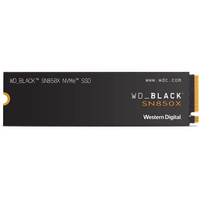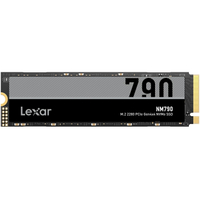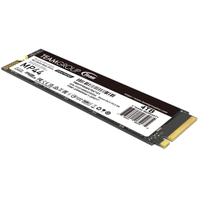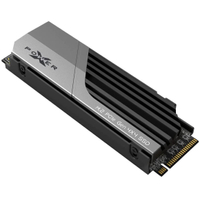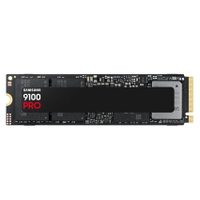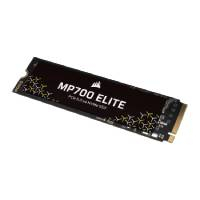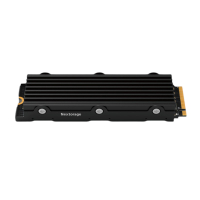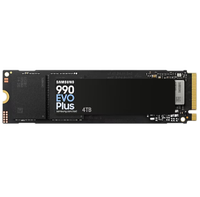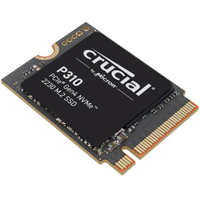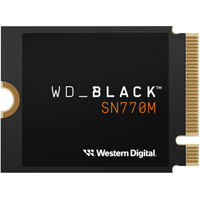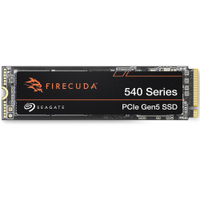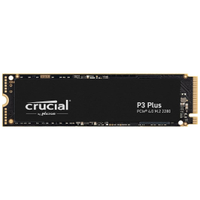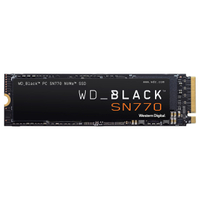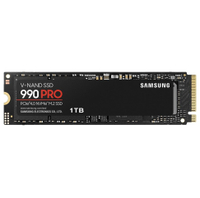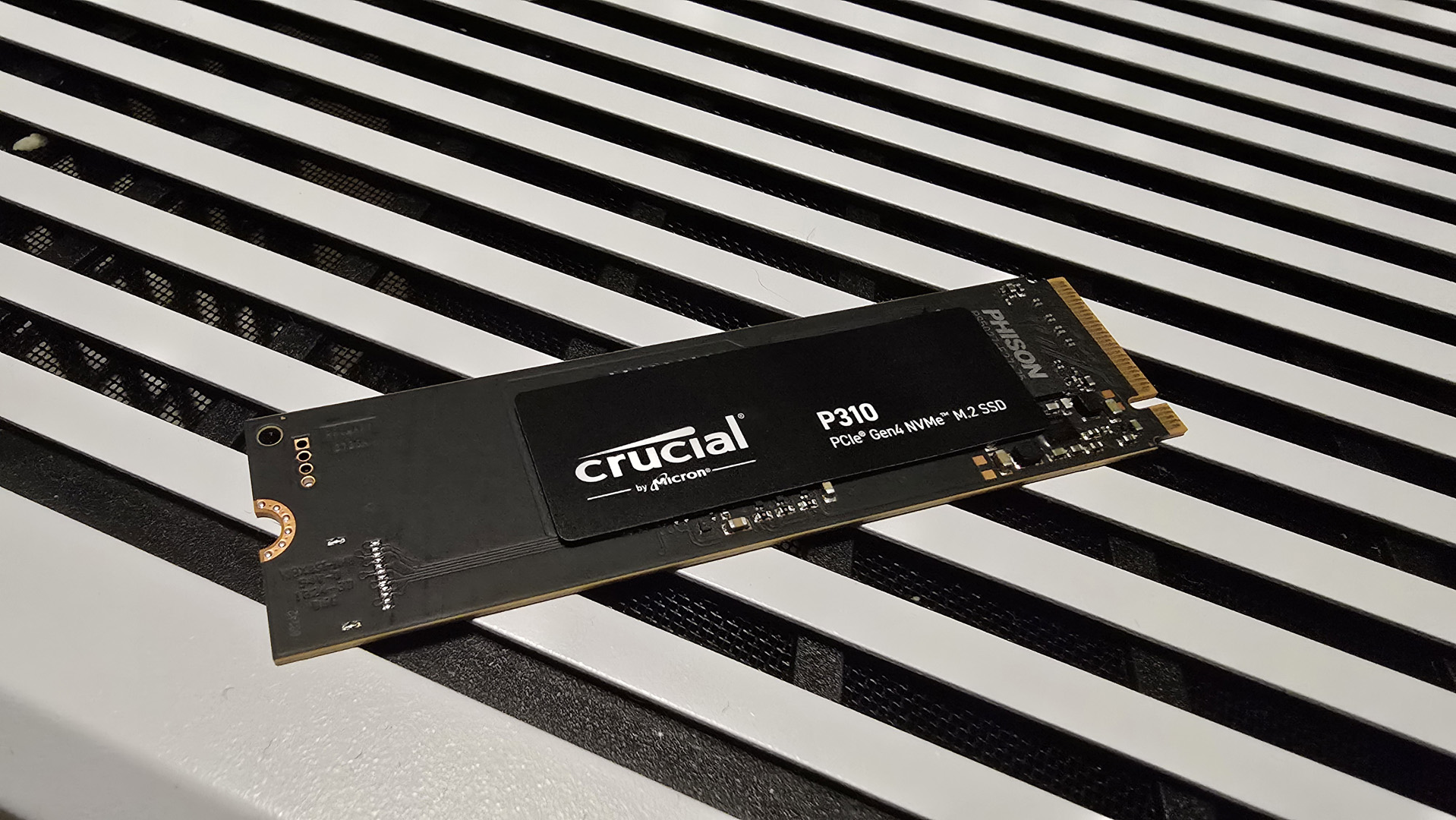Best M.2 SSDs for gaming in 2025: my top picks for blazing fast storage
Our choices for the best NVMe M.2 SSDs give you blisteringly fast load times.
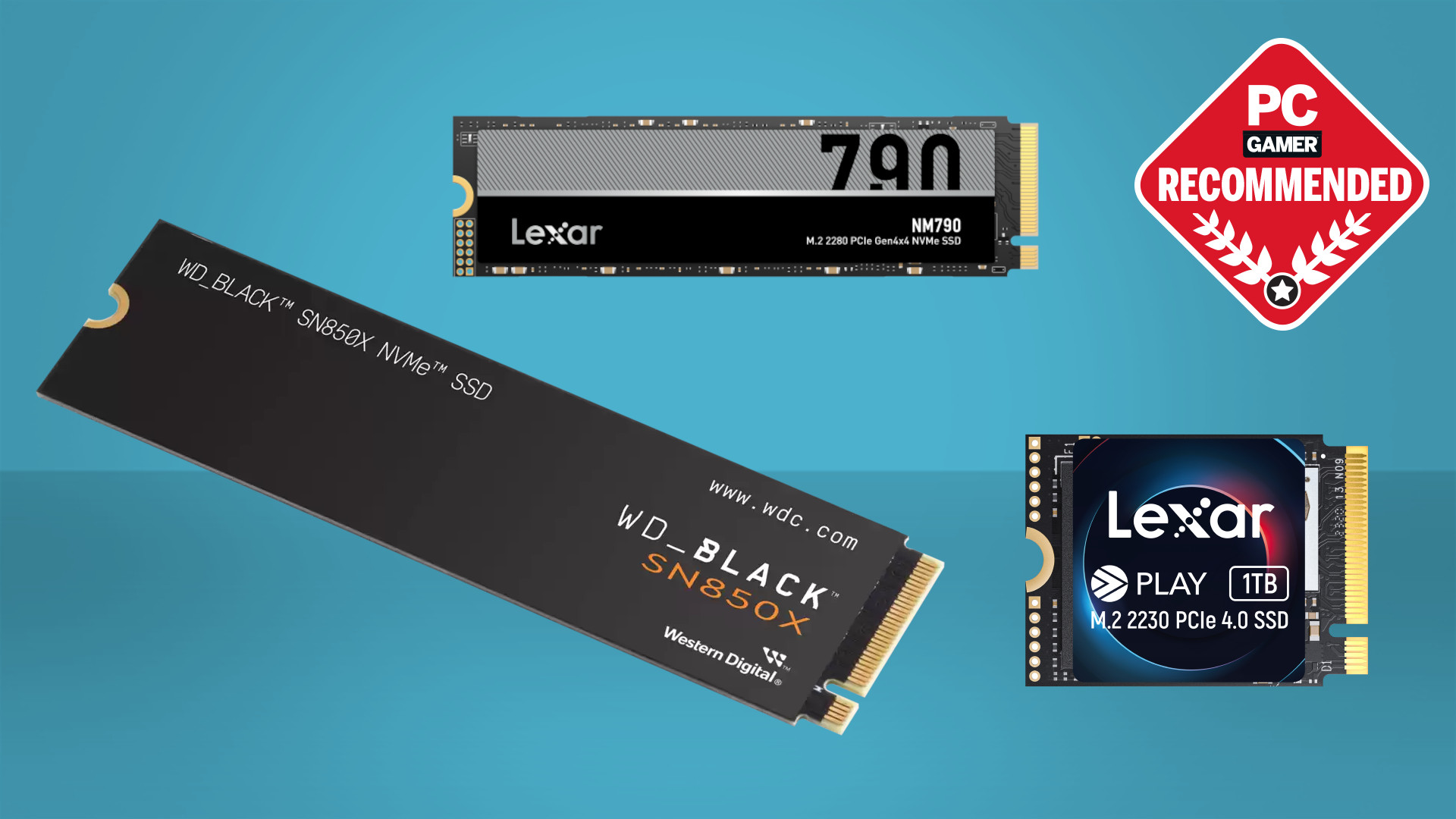
Experience lightning-fast load times with the best M.2 SSD for gaming. This reliable upgrade enhances your day-to-day PC usage, as not only does an M.2 NVMe SSD provide a much faster overall experience than other types of drive, but it's also one of the most affordable upgrades you can make for your PC.
The best M.2 SSD for gaming is the WD Black SN850X. It manages to balance performance with very reasonable pricing, making it a great shout for any modern gaming rig. If you're looking for something cheaper, however, then the Lexar NM970 is the best budget M.2 SSD by far, thanks to its blistering performance for a surprisingly low price.
We're constantly testing the very latest drives to identify the top NVMe SSDs for PC gaming. 512 GB used to be enough, but these days we consider 1 TB to be a more realistic minimum, and if you can stretch to a 2 TB or 4 TB drive, even better. We still think you should be buying Gen 4 drives over Gen 5, as when it comes to real-world performance a Gen 4 drive is still all you really need in 99% of scenarios. Still, if you have your heart set on a Gen 5 drive and don't mind the cost, we do recommend the Team Group T-Force Z540.

Jeremy likes CPUs. And GPUs. And SSDs. A lot. Which is just as well, since he's been writing about them since the early Mesozoic period. Or at least since Intel released those early stuttering SSDs. Remember them? Good times.
Recent updates
Updated April 4, 2025 to add the Samsung 9100 Pro SSD to the Also Tested section. It's a mighty fine Gen 5 SSD but it's much more expensive than our current pick for the best PCIe 5.0 drive, Team Group's T-Force Z540. The rest of our recommendations remain the same but with lots more SSDs coming out this year, there's a good chance that everything could change in a few months!
Updated 26 February 2025 to add the WD Black SN850X 8 TB in as our best 8 TB SSD recommendation, and to freshen up the copy of our other recs. They remain the same, so fire away!
The quick list
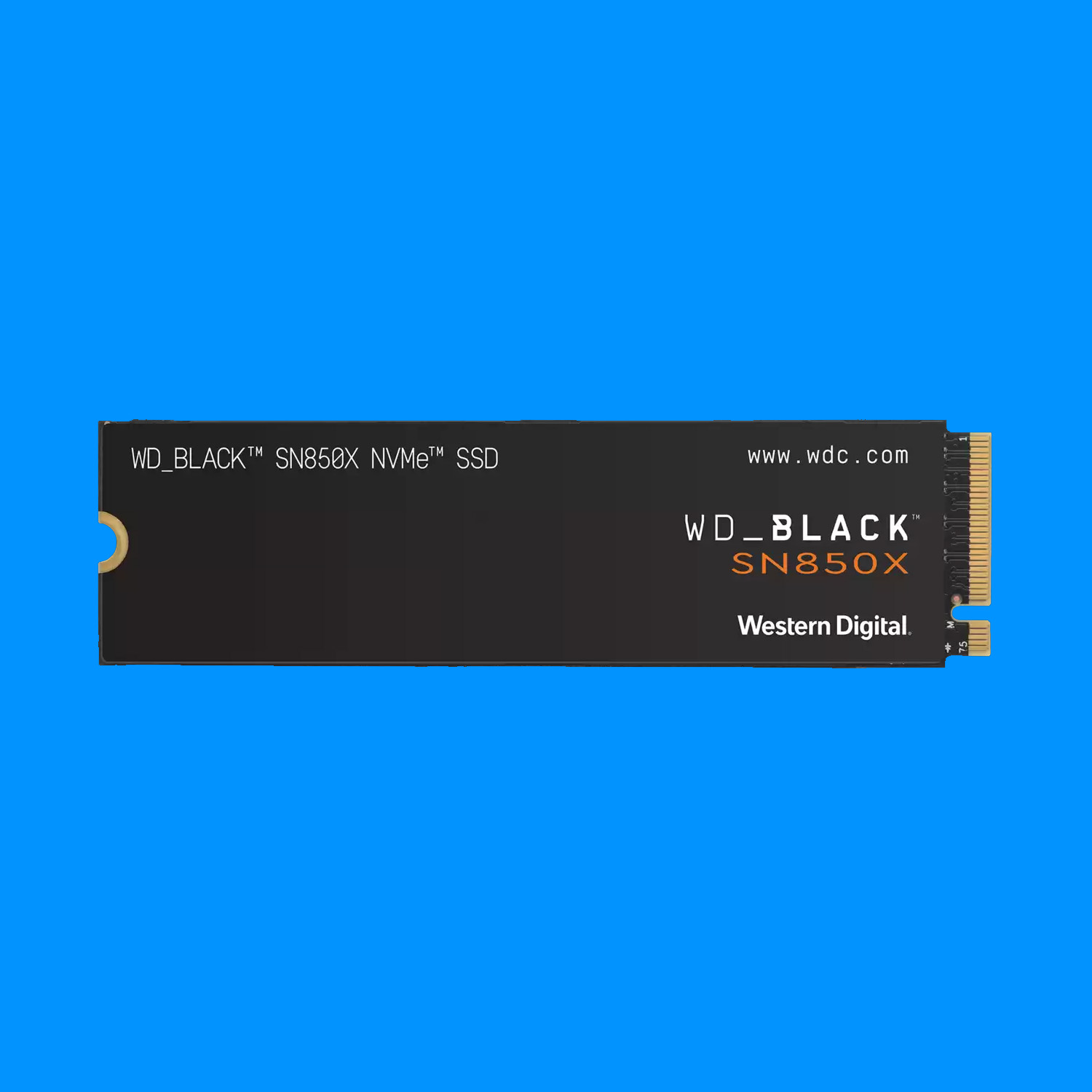
Best overall
The WD Black SN850X covers all of the bases you could want from a gaming SSD beautifully, and even though it's been around for a while it's still the best overall NVMe drive out there right now.

Best budget
The Lexar NM790 is a great performing Gen 4 SSD from a respected manufacturer that costs a lot less than you might expect, while making very few real-world compromises.

Best high capacity
If you want masses of high-speed NVMe storage for a not-so-massive price, then Team Group's MP44 is the obvious choice. It's very similar to the NM790 and there's nothing wrong with that SSD.
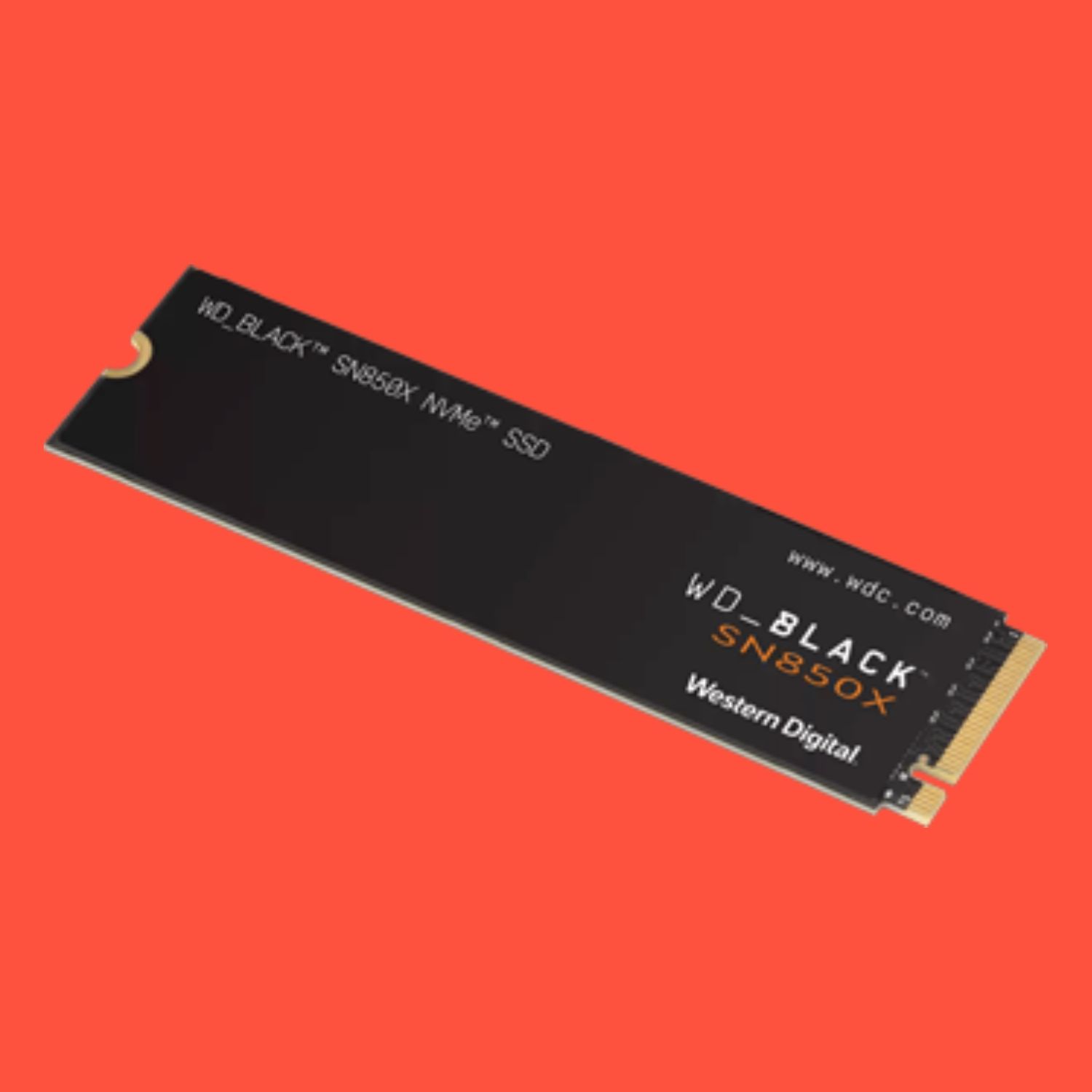
Best 8 TB
Not just the best M.2 SSD for gaming, but also the best 8 TB pick—with some caveats. It's huge, but it's also very expensive and not the best pick for a pure gaming drive thanks to lower 4K random performance. Still, if you want serious size in one stick, this is it.

Best 2230 SSD
Need more storage in your Steam Deck, Asus ROG Ally, etc? Well, this 1 TB 2230 from Lexar is the one to get. Fast, cool, and great value for money. Shame there isn't a bigger version at the moment.
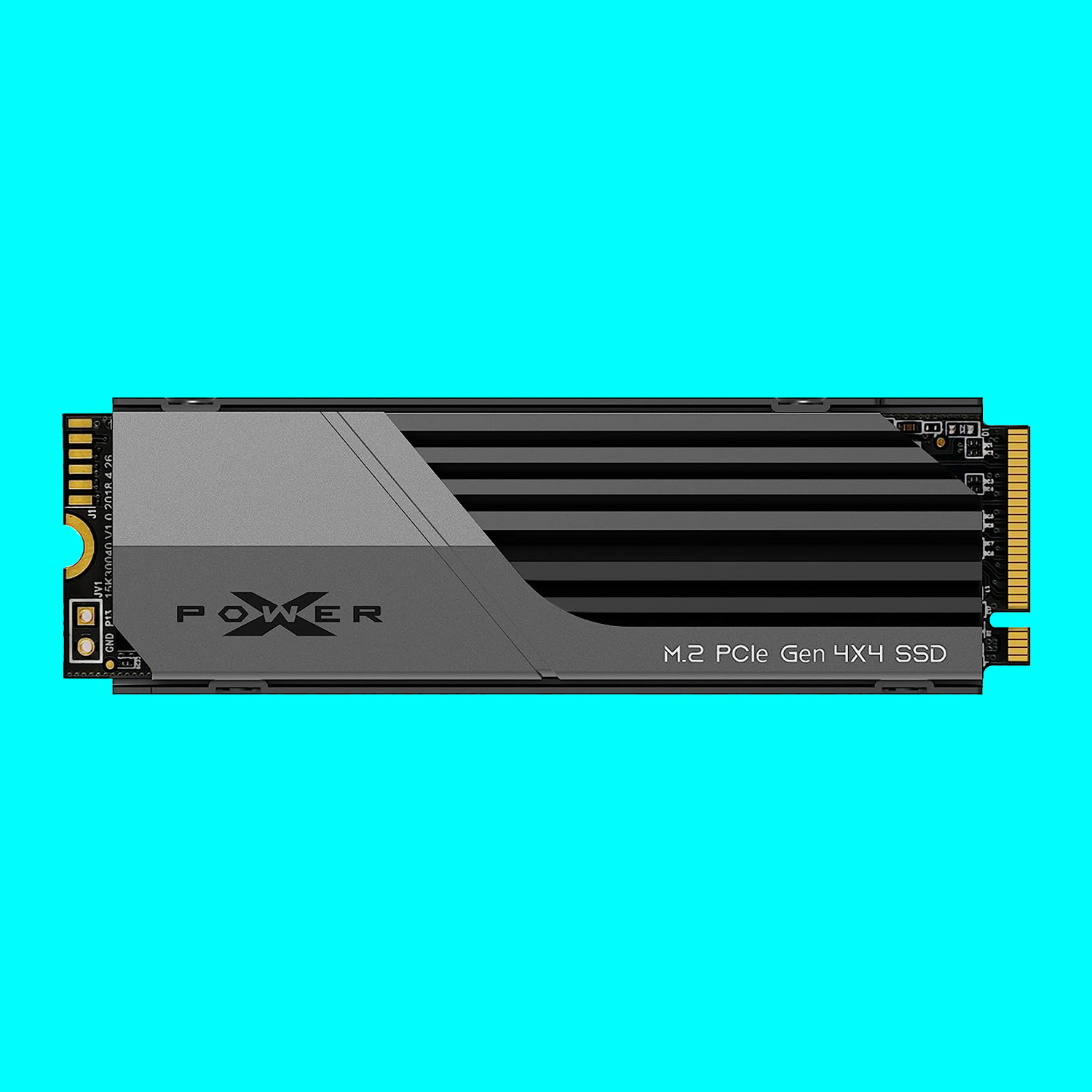
Best for PS5
The latest Phison controller in combination with some high-performance NAND flash memory makes the Silicon Power XS70 an extremely fast SSD for Sony's PlayStation 5.
⬇️ Click to load more of the best SSDs ⬇️
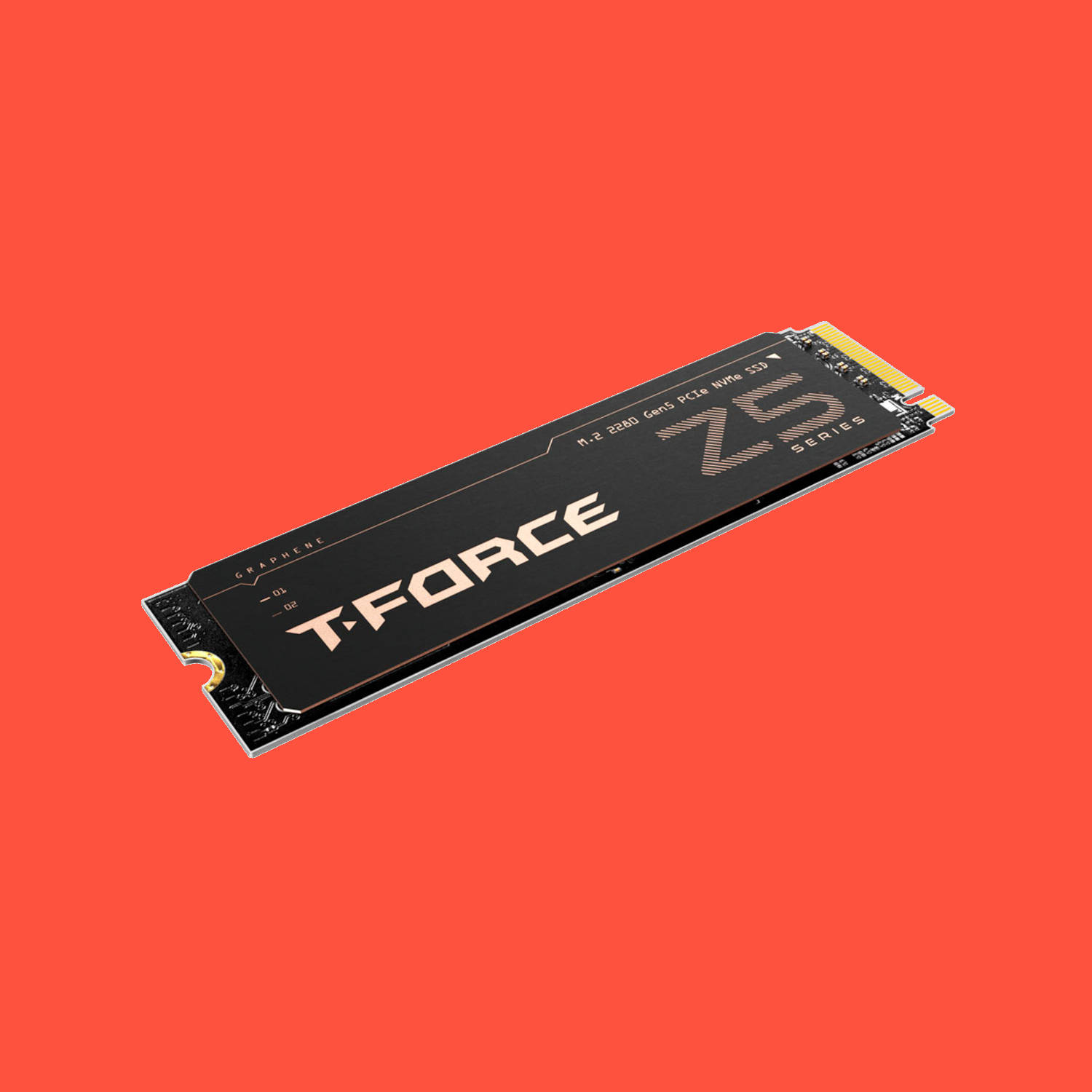
Best PCIe 5 SSD
If you really must have the fastest SSD possible in your gaming PC, then don't spend any more than you need to. The T-Force Z540 is the best Gen 5 SSD because it's super fast but not super expensive.
The best gaming SSD
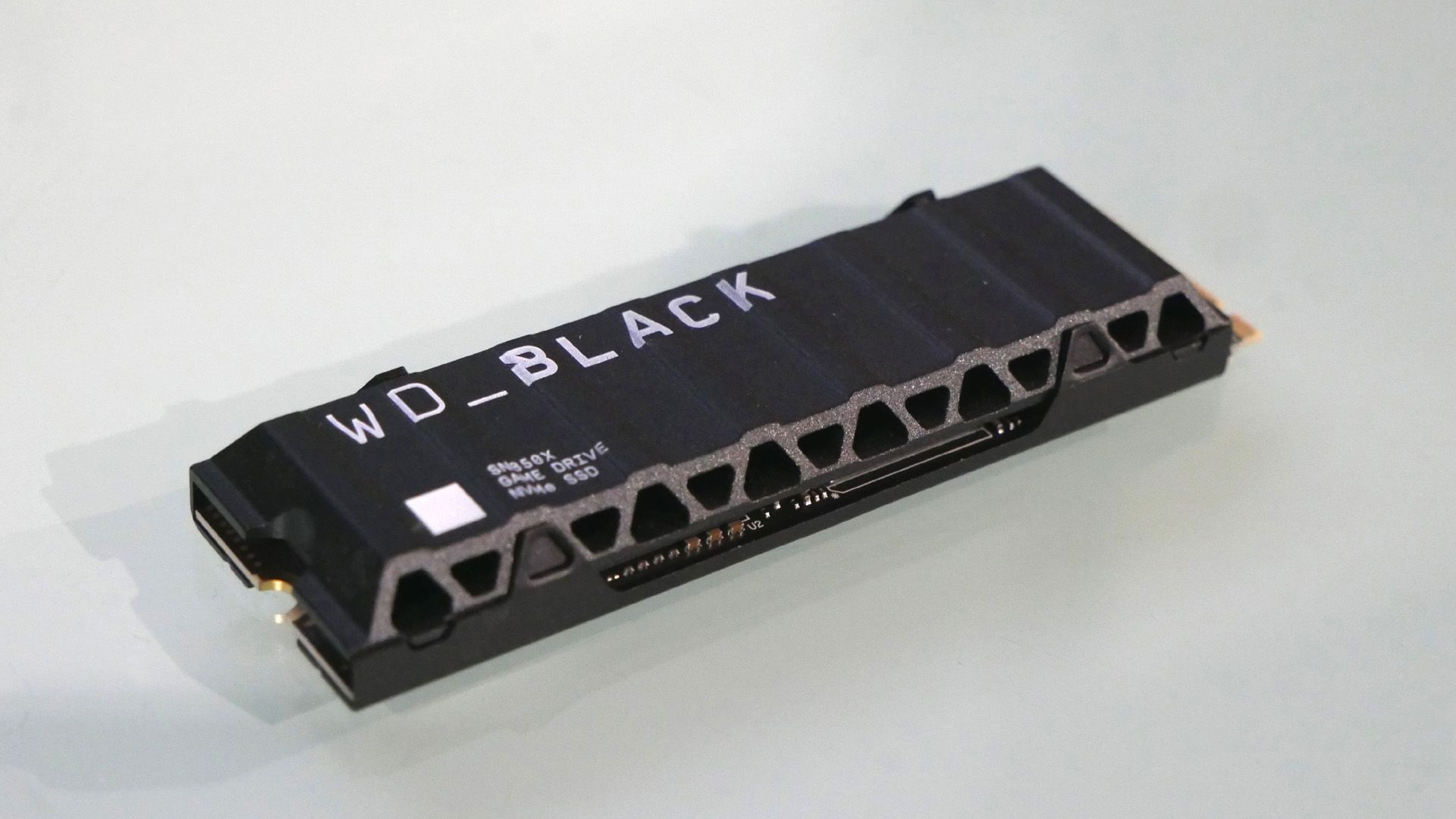
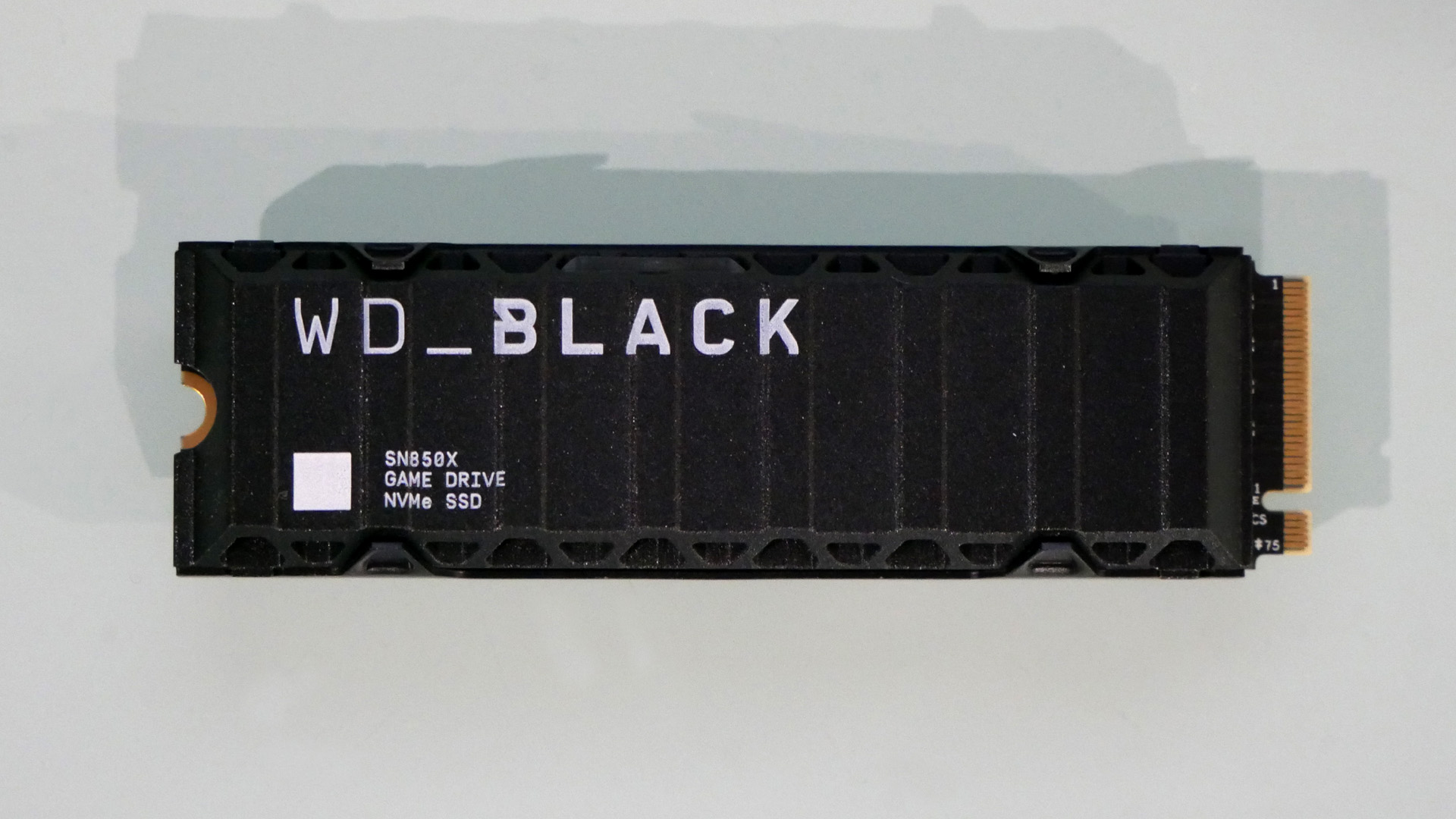
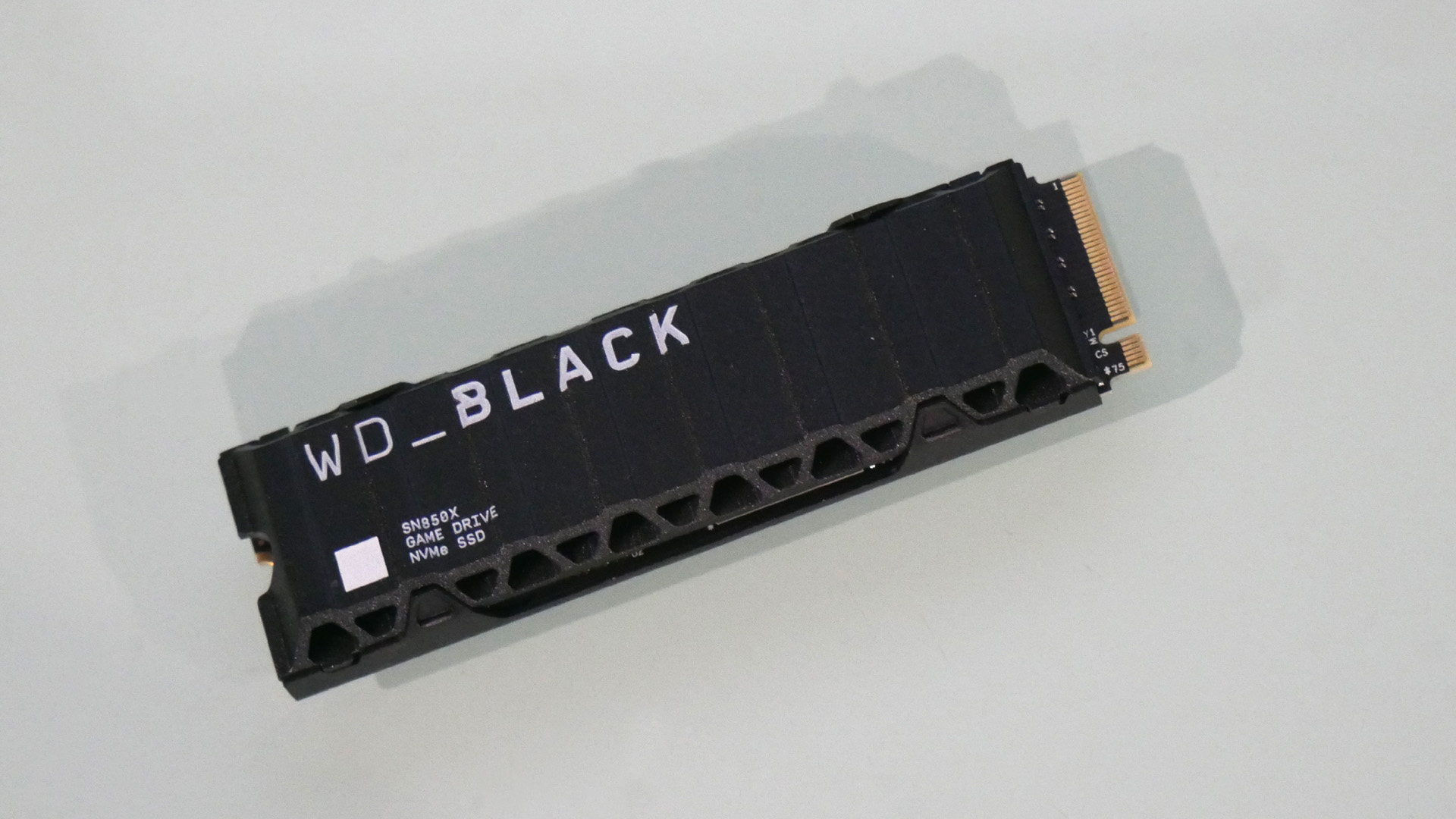
Specifications
Reasons to buy
Reasons to avoid
Our favorite WD Black SN850X config:
WD_Black SN850X | 2 TB | 7,300 MB/s read | 6,600 MB/s write
This drive comes in a variety of capacities, but we particularly like the 2 TB flavour here. Still, no matter which one you go for, this is a fantastic all-round gaming SSD and tops our recommendations for a very good reason.
✅ If you want a great all-rounder: The SN850X is the champion when it comes to that all important combo of price, performance, and thermals. It does it all, extremely well.
✅ If you don't want to worry about thermals: The SN850X likes to run cool, even without a heatsink. It'll have limits, of course, but it's remarkably chilly under pressure.
❌ You want the very fastest: Sure, there are faster on the market—but you'll have to dip into Gen 5 territory to significantly beat it, and there are major caveats that come with those drives as things stand.
If you're looking for the best M.2 SSD for gaming, well, it's the WD Black SN850X. It's been at the top of this list for quite some time, but even in 2025, it's still the best all-rounder for a speedy M.2 drive.
You might be wondering why I didn't go for a Gen 5 in the top spot, given that Gen 5 SSDs have been around for a while now and are the speediest NVMe drives on the block. The reasoning is simple—what you're looking for in a great M.2 drive is a combination of performance, heat management, and price. Gen 5 drives have the first one sorted, but the last two are still big issues (although I do recommend one PCIe 5 drive below).
The SN850X is a perfect combination of those factors. With read speeds of 7,300 MB/s and 6,300 MB/s writes, this drive delivers a whack of performance perfect for its reasonable price point.
It also runs nice and cool. Overheating can be a problem with many NVMe drives, but this little monster keeps its thermals in check with or without a heatsink, meaning it makes a great addition to a gaming laptop, too.
The 4K random access results aren't the best on the block, but they're still good enough to provide excellent real-world gaming performance and speedy load times. Really, it's best to think of the WD Black SN850X as an all-rounder that refuses to go down for the count, and as a result, it stands, grizzled but magnificent, at the top of this list.
Several of our hardware team have used multiple of these drives over the years, and they've withstood many reads and many writes over many years without issue. It does exactly what you want a great M.2 drive to do—gets on with the job of handling your storage demands and delivering your games with a great turn of speed and minimal fuss.
So, don't count the old dog out of the fight. It's still a supremely brilliant SSD in 2025, and the one you should be aiming for if the overall best is what you need.
Read our full WD Black SN850X SSD review.
The best budget gaming SSD
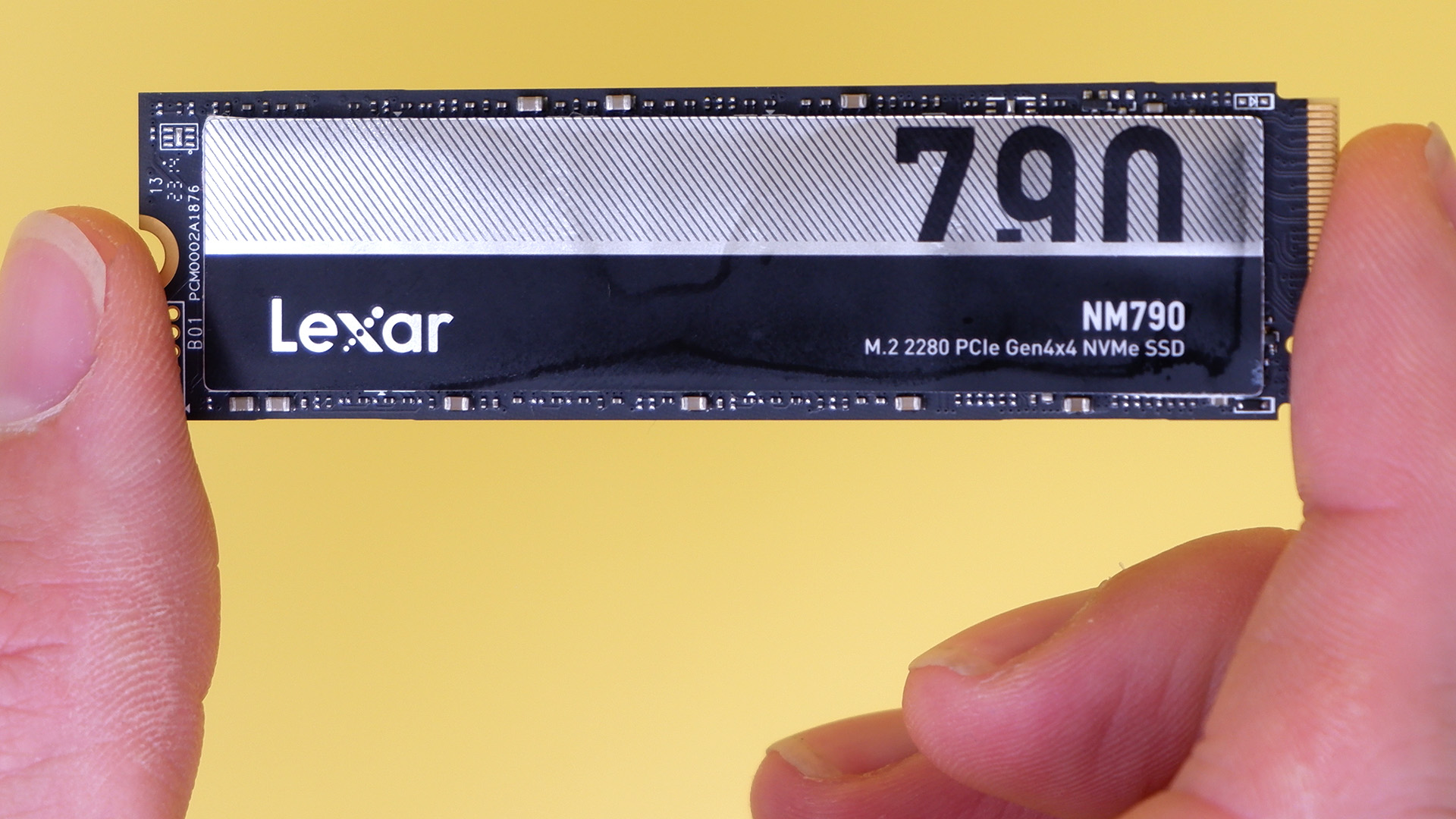
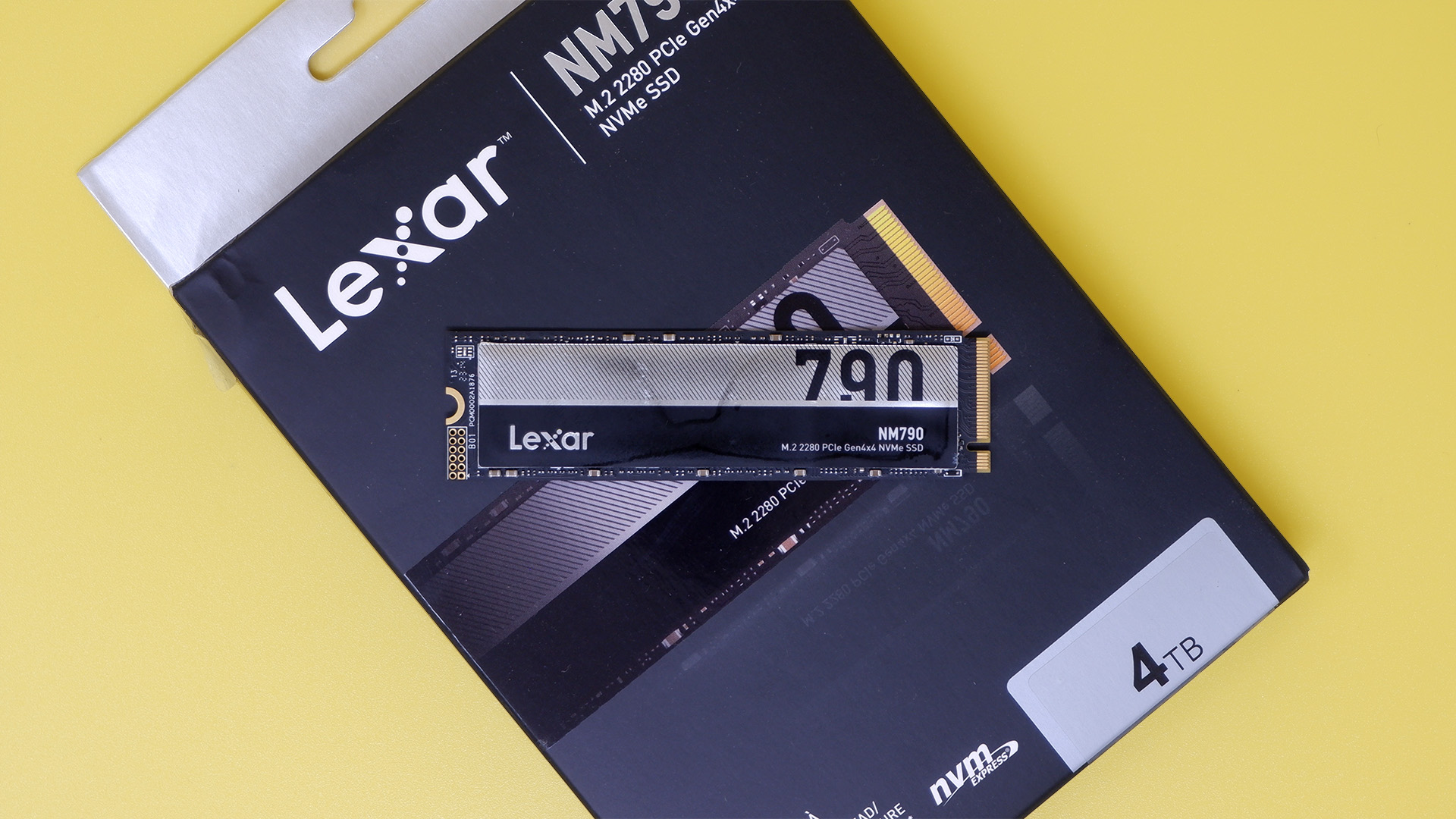
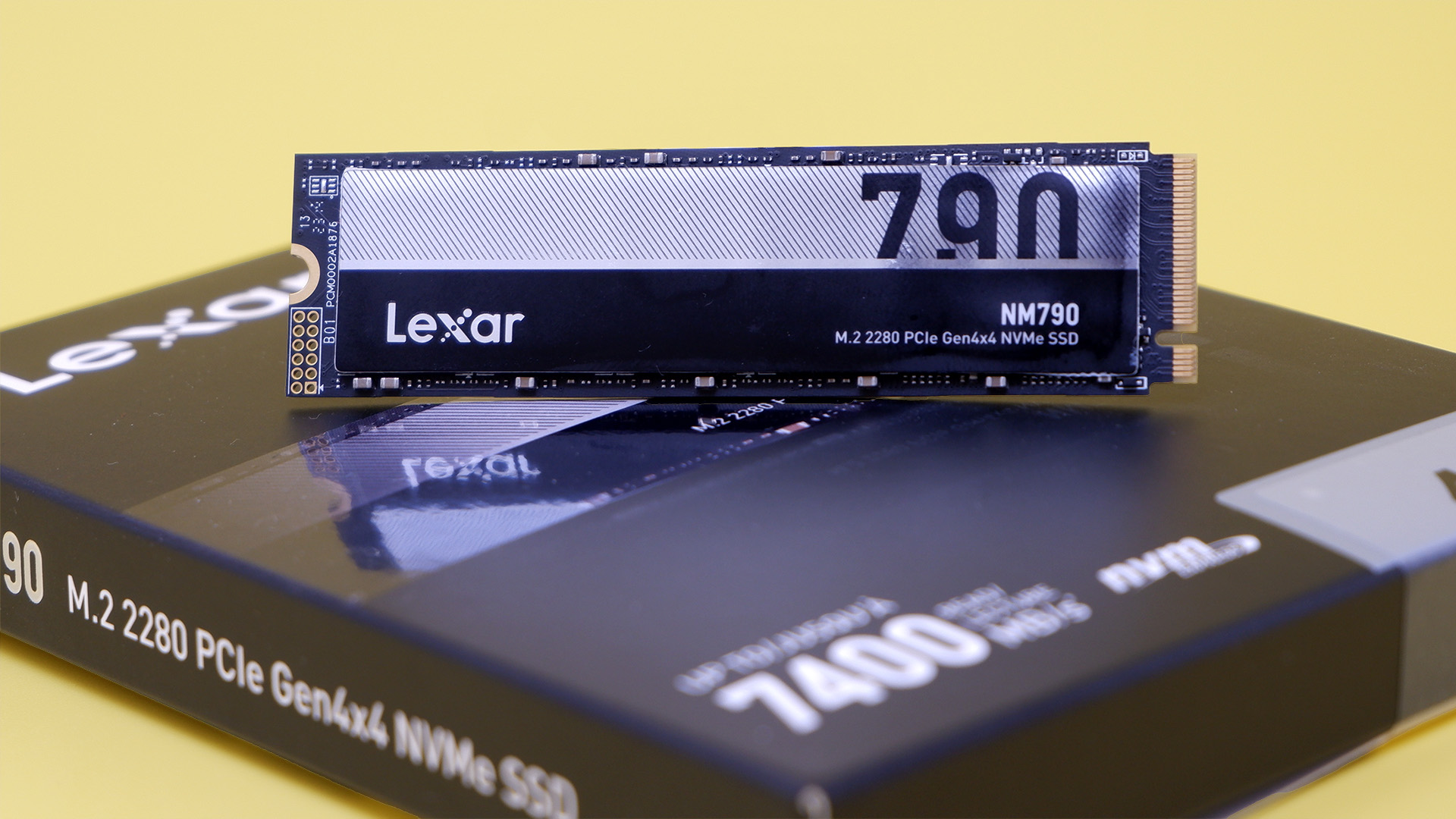
Specifications
Reasons to buy
Reasons to avoid
Our favorite Lexar NM790 config:
Lexar NM790 | 1 TB | 7400 MB/s read | 6500 MB/s write
If you're looking for super-fast speeds without a super-high price, the Lexar NM790 has several tricks up its sleeves to make all that not just possible, but advisable too. It's fast, cool and reliable, and makes for a fantastic gaming drive.
✅ If you want superb performance: While it might be a budget drive, the Lexar NM790 still delivers figures to be proud of.
✅ If you're on a budget: Seems obvious, doesn't it? But the Lexar delivers such a whack of performance for a regularly discounted price, it really is the best for those looking to save some pennies.
❌ You can find cheaper with similar performance: The NM790 is a popular drive, and SSD prices are extremely changeable these days. If you can find something with similar performance on this page for cheaper, go for it—but the Lexar usually wins out.
The Lexar NM790 is our budget champion, a drive that delivers stunning performance for a very reasonable price. It achieves this by making use of some previously unknown components, but make no mistake—it's a powerhouse of an M.2 SSD, and the best budget pick by far.
Prices on SSDs vary with the wind these days, but it's still possible to find this drive in 1 TB and 2 TB configurations for much cheaper than the rest. That's thanks primarily to its clever use of a cheaper controller, the MaxioTech MAP1602A, and some YMTC 232 TLC NAND.
You can also buy it in 4 TB config, although I've seen prices rise on that particular model to the point where you'd be better off with the Team Group MP44 below if 4 TB is what you need.
Forget all those letters and numbers for a second. What this drive achieves, with lesser-known components, is sequential read speeds of 7,400 MB/s and sequential write speeds of 6,500 MB/s. That manages to put the Lexar up there with some of the fastest Gen 4 drives we've had in our test benches, for a price that's often a lot less than the competition.
You can even find one on discount fairly often if you're prepared to keep an eye on our cheap gaming SSD page. Yes, SSD prices fluctuate a lot at the moment, but the Lexar is a reliable feature on our deal pages thanks to the phenomenal performance it provides for a more budget price point.
And if you think reliability is a concern, think again. I've had a 2 TB version of this drive running in one of my main machines for the past two years or so, and it's still a flawless performer to this day.
It might make use of cheaper components, but when they deliver this level of reliability and performance, don't be put off by the lack of brand recognition. Besides, it's a Lexar, and that's a pretty big name in the tech world no matter which way you look at it.
So, put your hands together for a superb M.2 SSD for less. When it comes to budget picks, the Lexar NM790 stands tall against the competition.
Read our full Lexar NM790 4 TB review.
The best 4 TB SSD
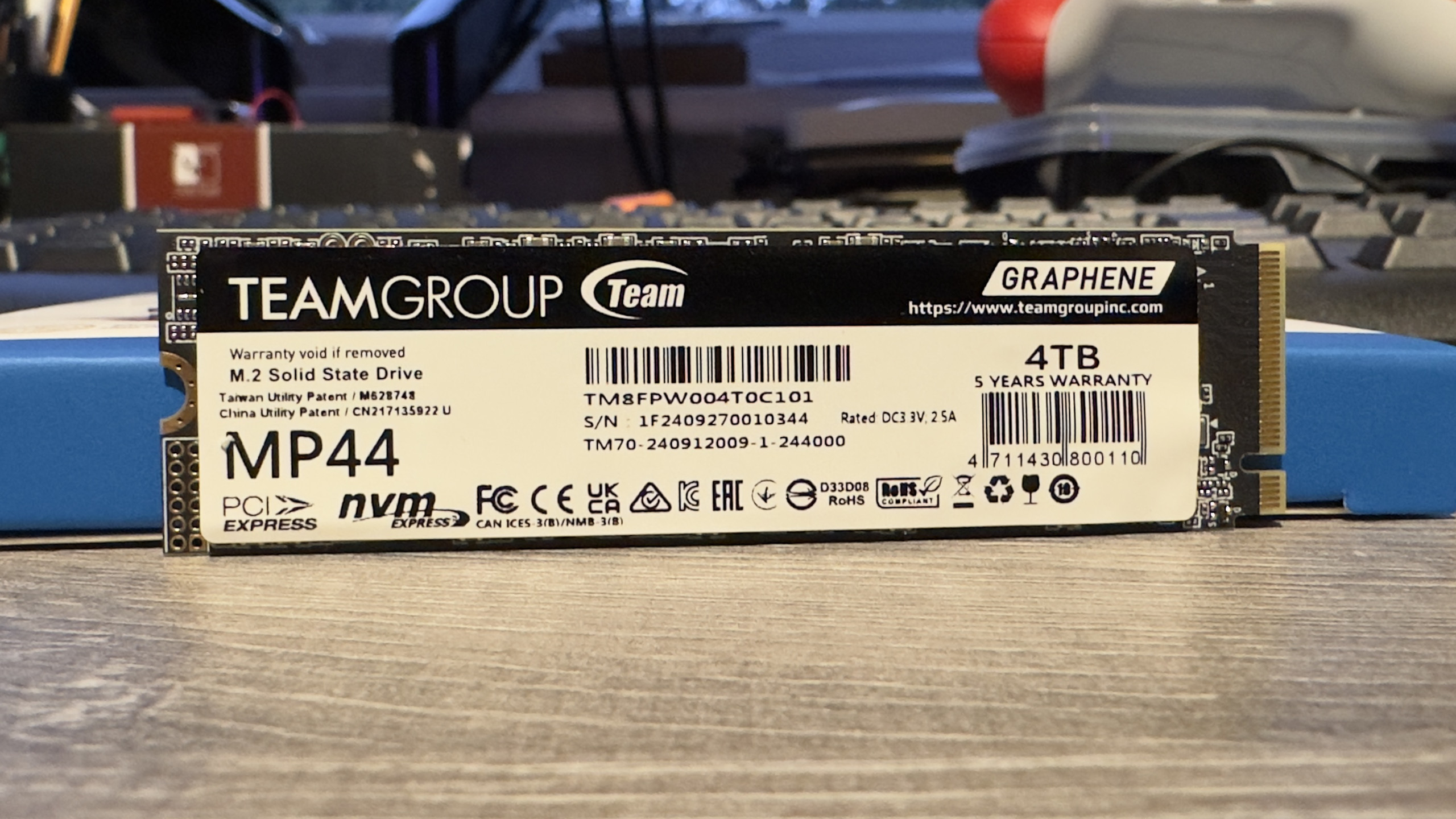
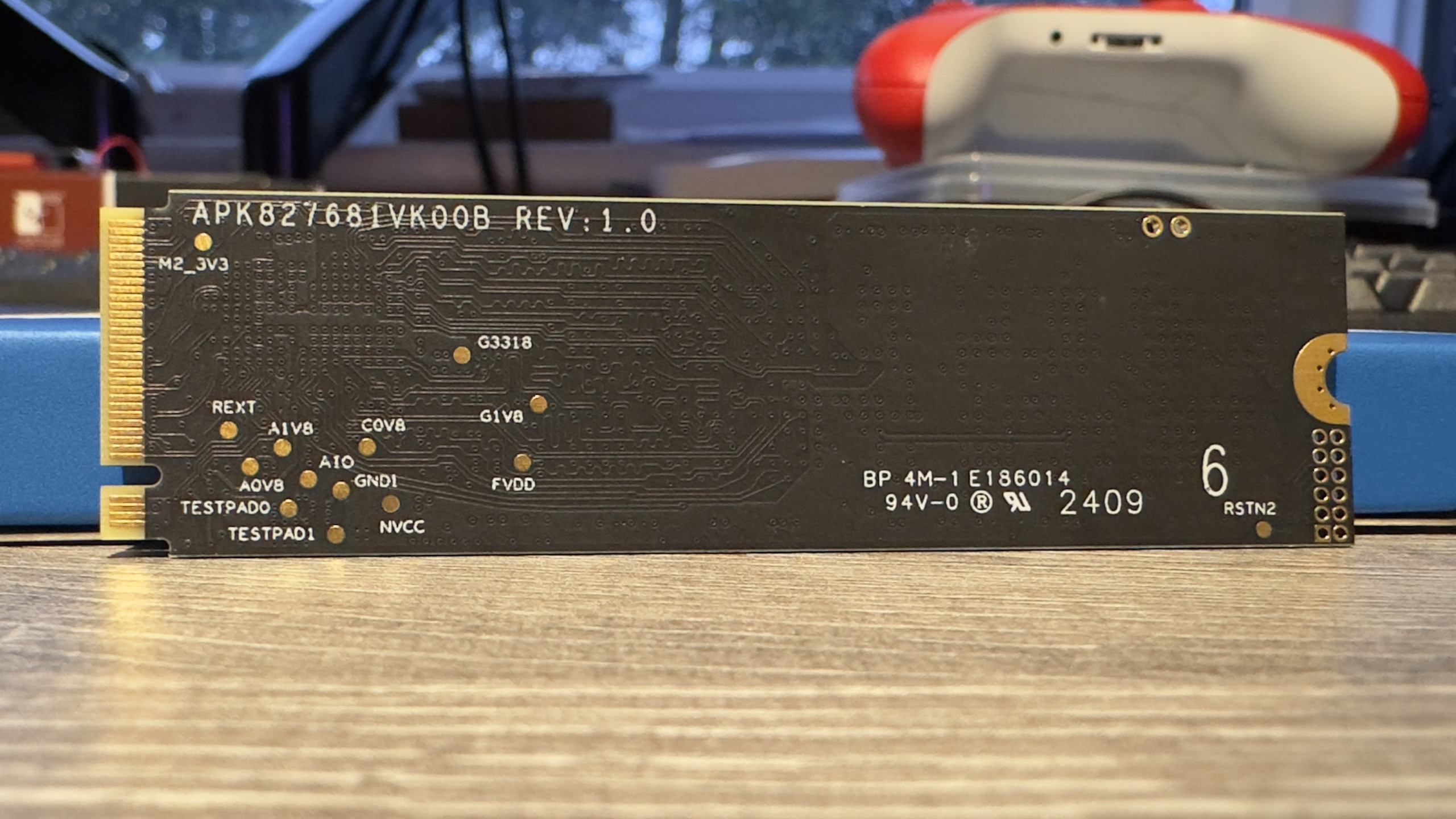
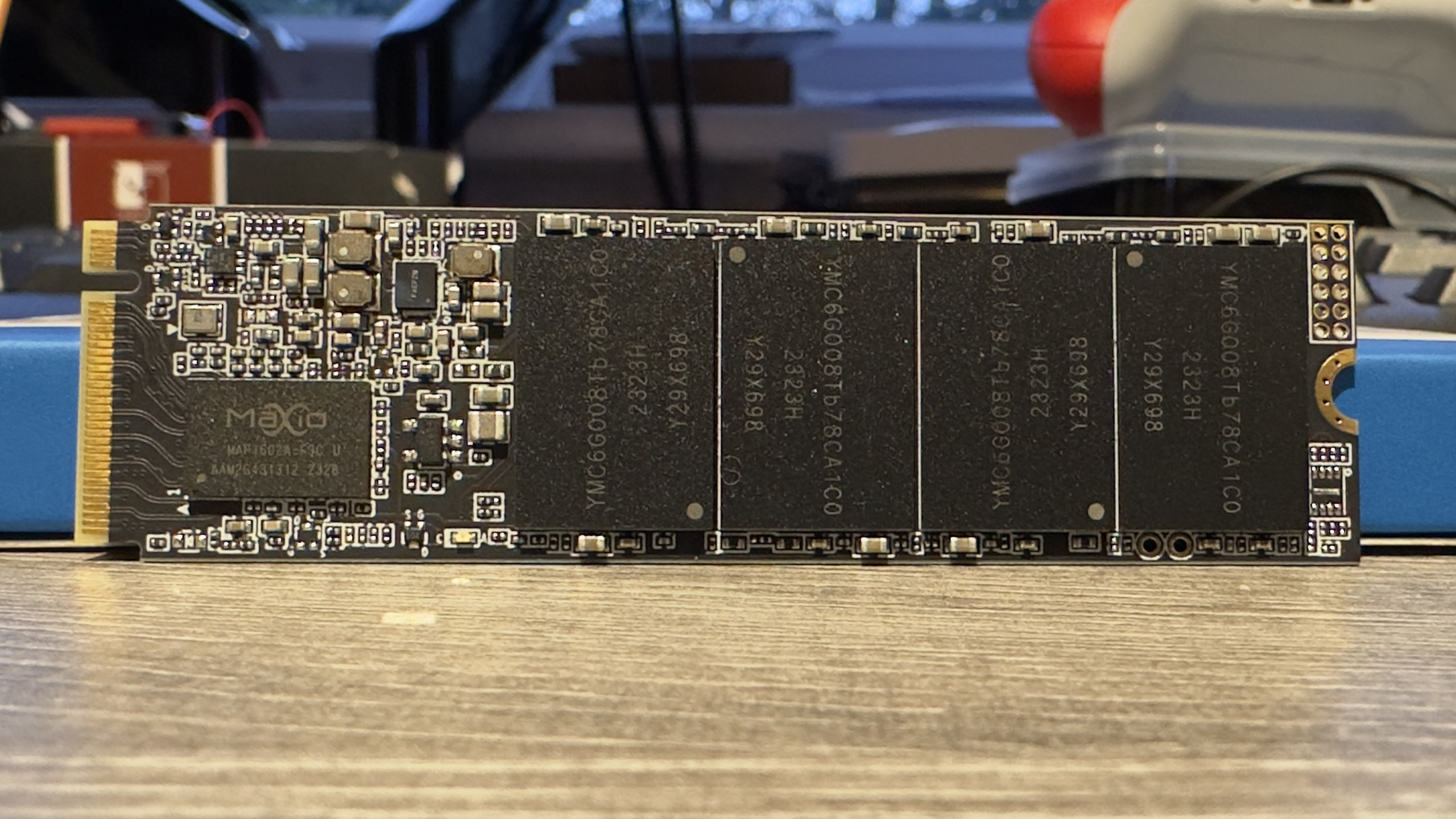
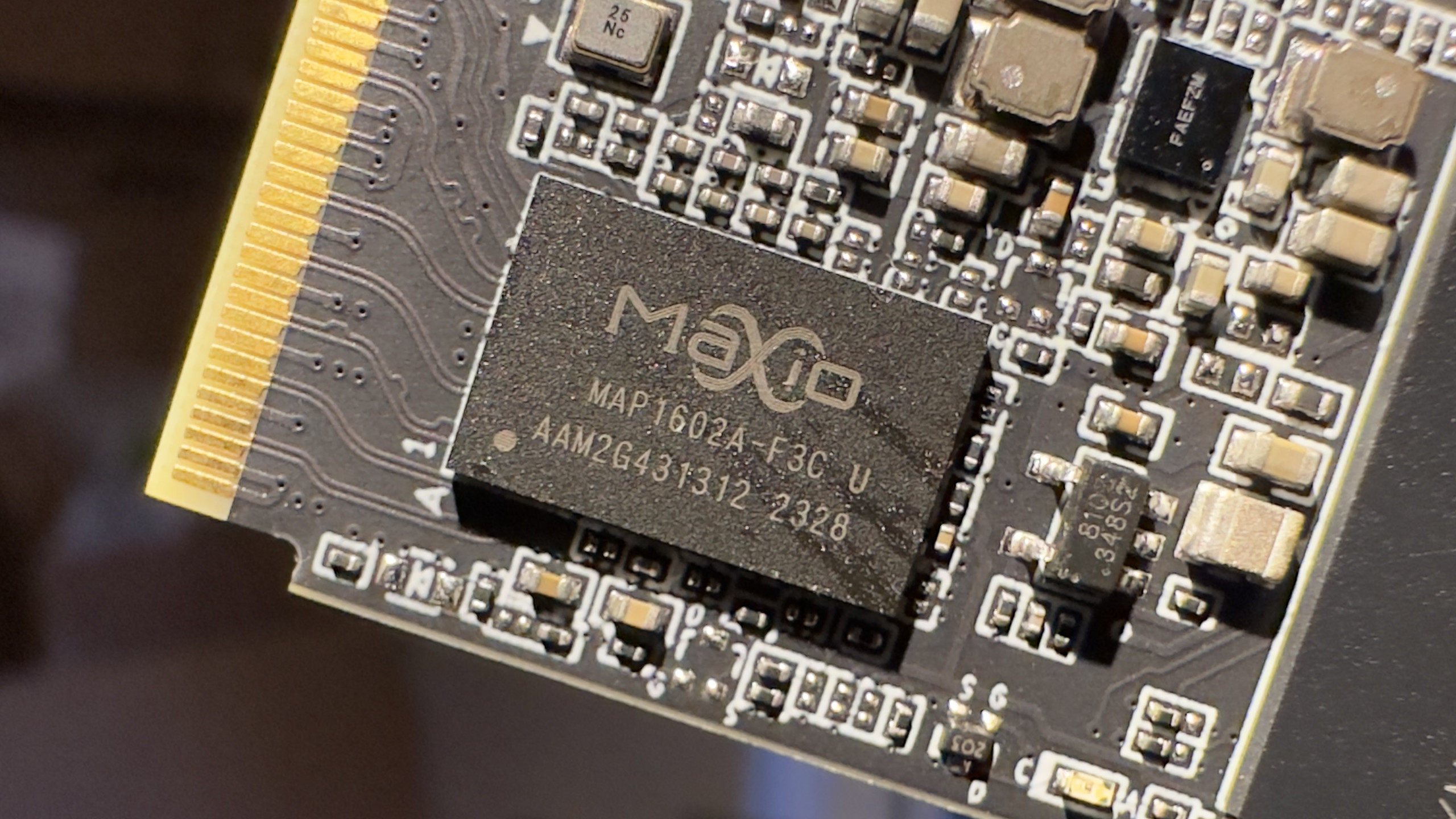
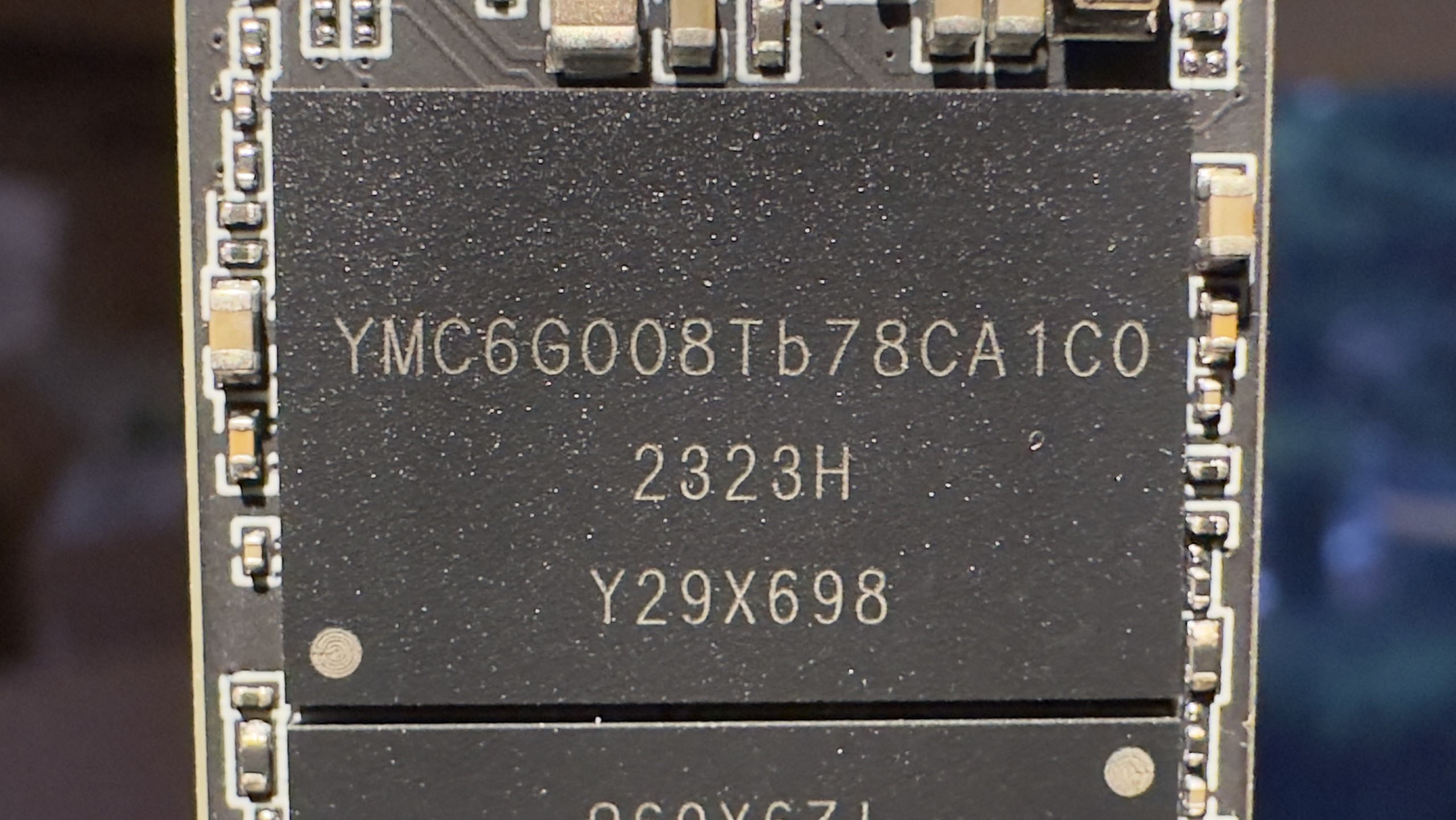
Specifications
Reasons to buy
Reasons to avoid
Team Group MP44 | 4 TB | NVMe | PCIe 4.0 | 7400 MB/s read | 6900 MB/s write
Team Group has given this some mighty specs for the money, though it's actually the same hardware as in the Lexar NM790. The sequential read/write speeds are extremely high but it can only sustain them over short bursts. At this price, it's well worth putting up with that limitation.
✅ You want an SSD with room for many, many games: You could always go for an 8 TB drive of course, but those are seriously pricey and have caveats of their own. 4 TB is a definite sweet spot for mega-gaming storage, and this drive is the best for it.
❌ You've got a hot-running PC: A lower thermal limit means you'll want to keep this drive running cool to get the best out of it.
Game install sizes seem to be ever-increasing, don't they? It wasn't long ago that a 50 GB install was a rarity, but these days a big release can chew up 150 GB+ of your precious storage space in one sitting. If you'd like to put storage space worries aside and get yourself a properly huge 4 TB gaming SSD, the Team Group MP44 is my top pick.
See that Lexar NM790 above? The MP44 makes use of much the same internals, with a larger dynamic SLC cache. While you can pick up the 4 TB version of that drive, too, we've plumped for the Team Group by virtue of its combination of performance and pricing combined with such a huge size.
There is the odd caveat to be aware of with this drive, however. It's got a lower thermal limit than the Lexar, which means you'll need to be aware of thermals in a particularly toasty PC to prevent it from throttling it back. However, if you've got good cooling (or provide it with a heatsink) you should have nothing to worry about.
Keep it cool, and it'll deliver 7,400 MB/s reads and 6,900 MB/s writes, although like the Lexar its 4K numbers are merely fine, not exceptional. Still, here you get a huge amount of storage space and properly competitive overall performance for a price that often beats out even the Lexar drive in this particular size configuration.
It's our top pick for a big drive at a small price. While the Team Group MP44 might not do anything spectacular, it delivers a serious chunk of storage space with excellent performance for less. So it goes here, doesn't it?
Read our full Team Group MP44 4 TB review.
The best 8 TB SSD
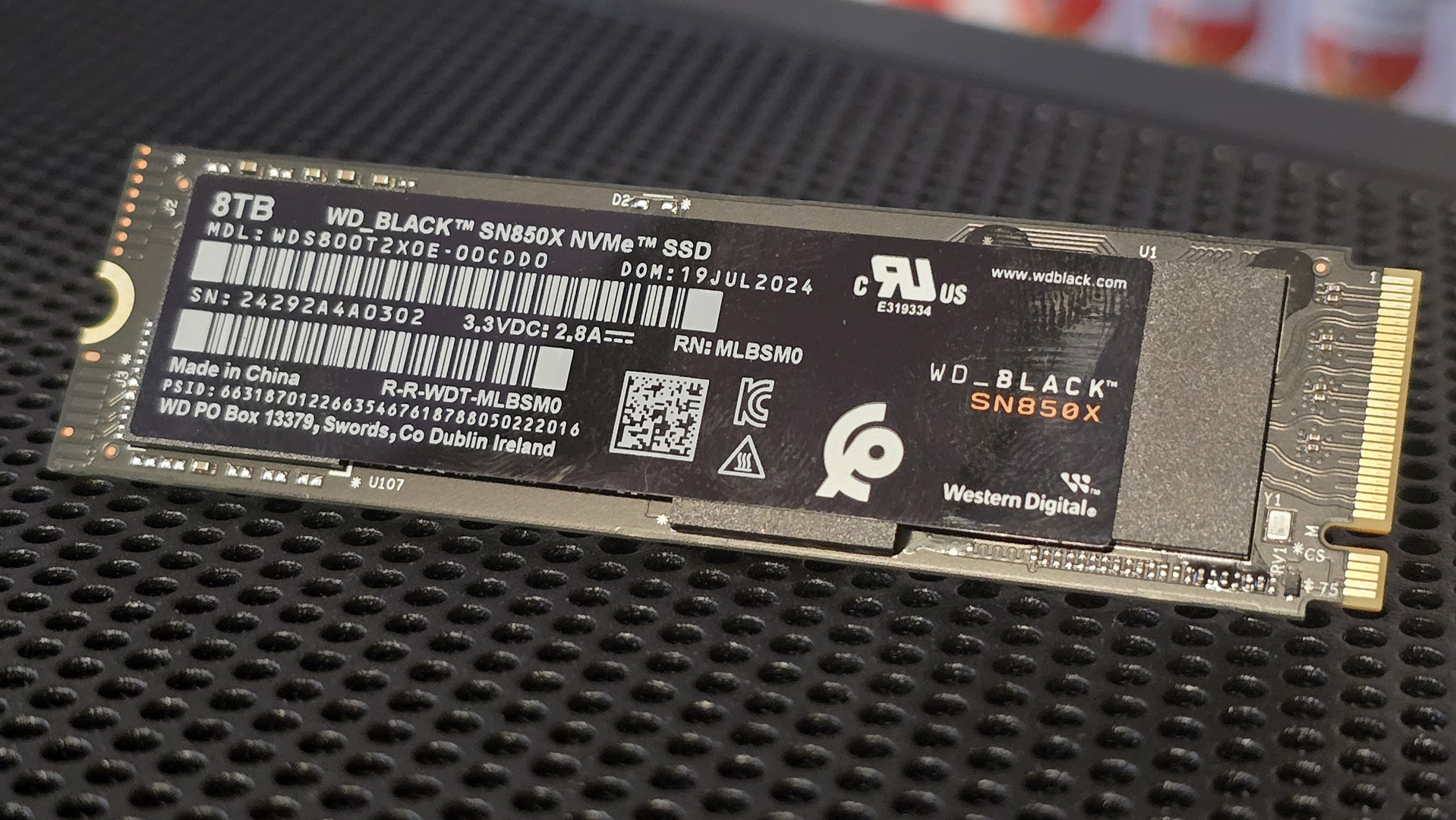
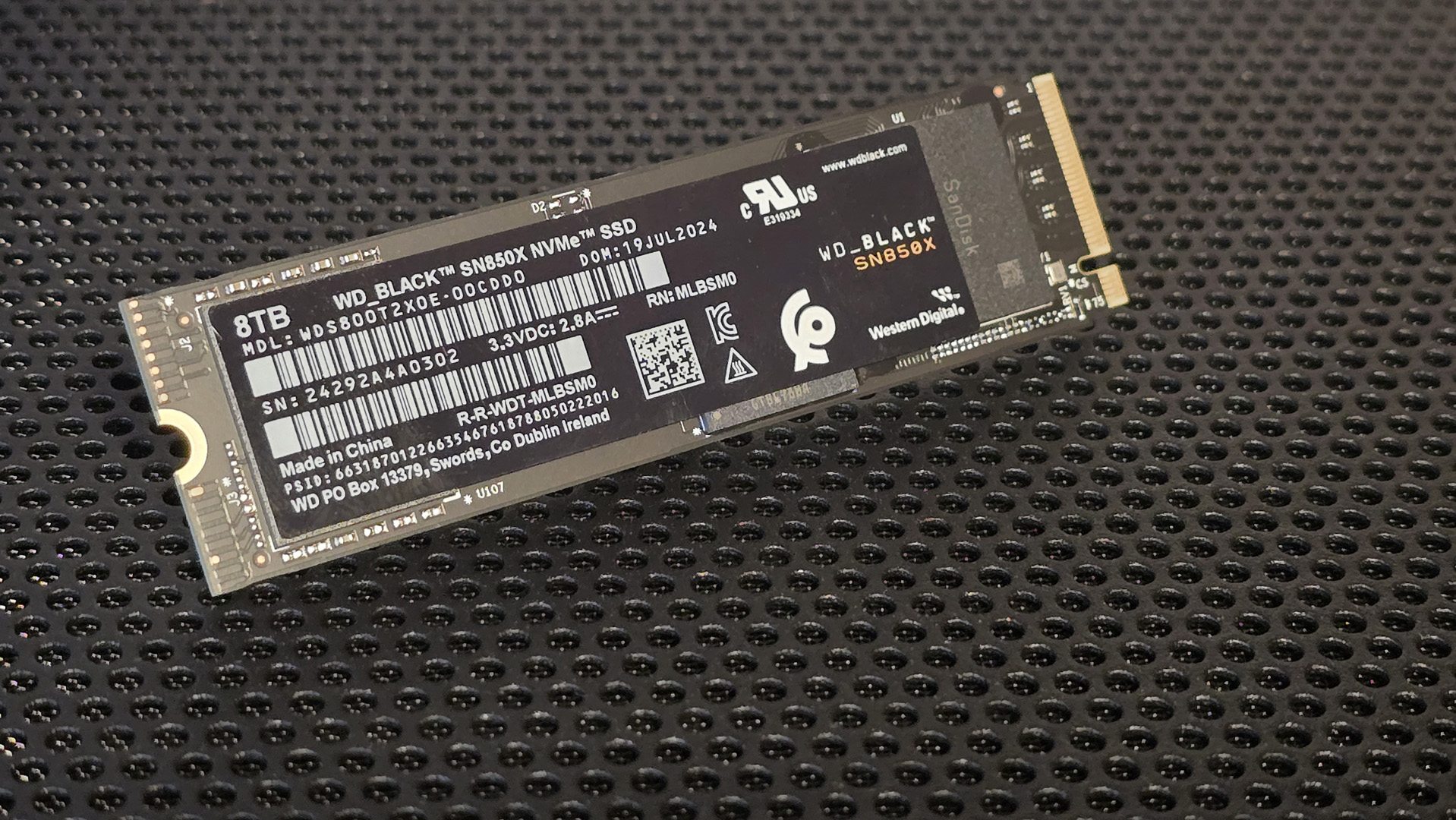
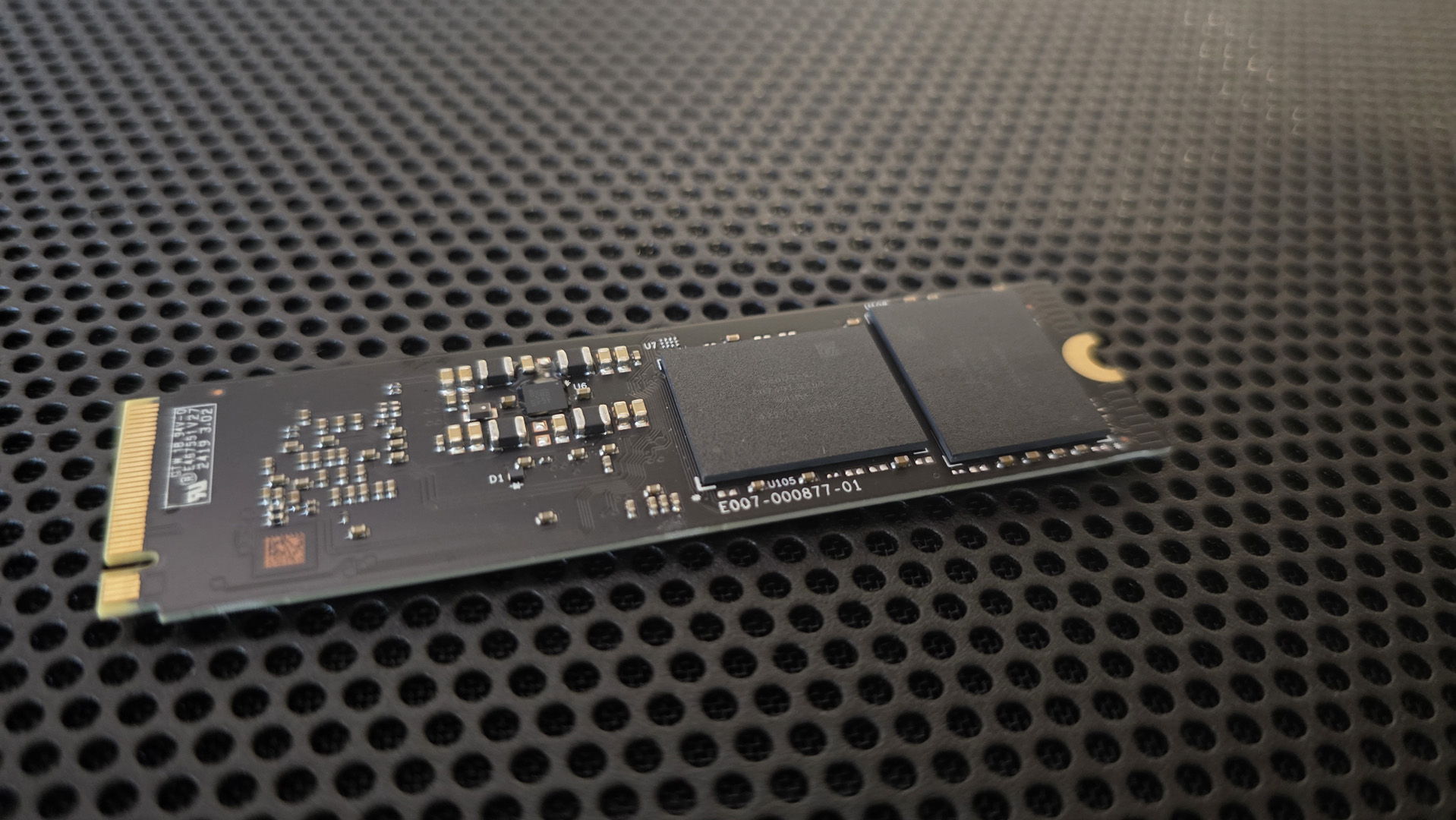

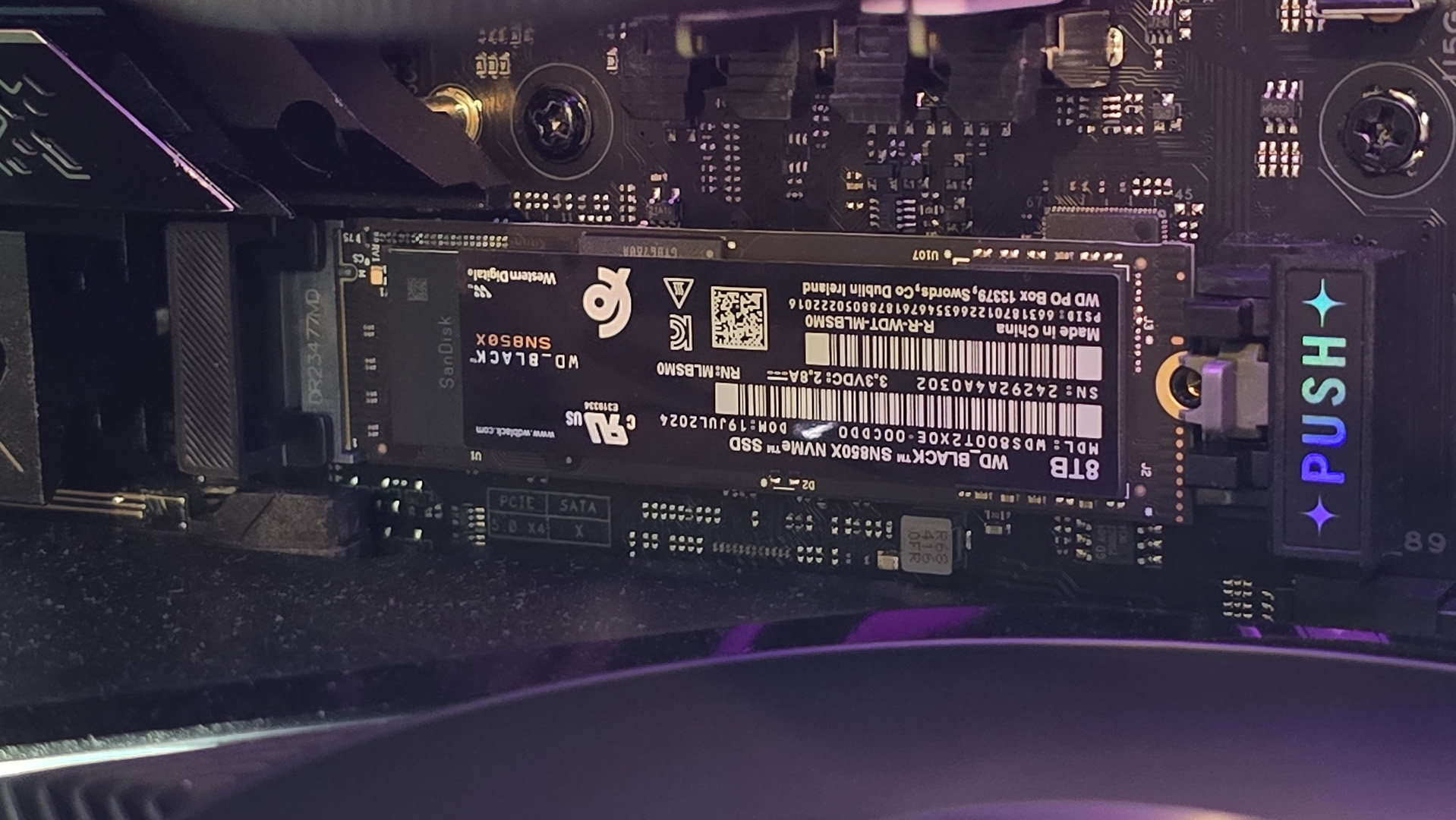
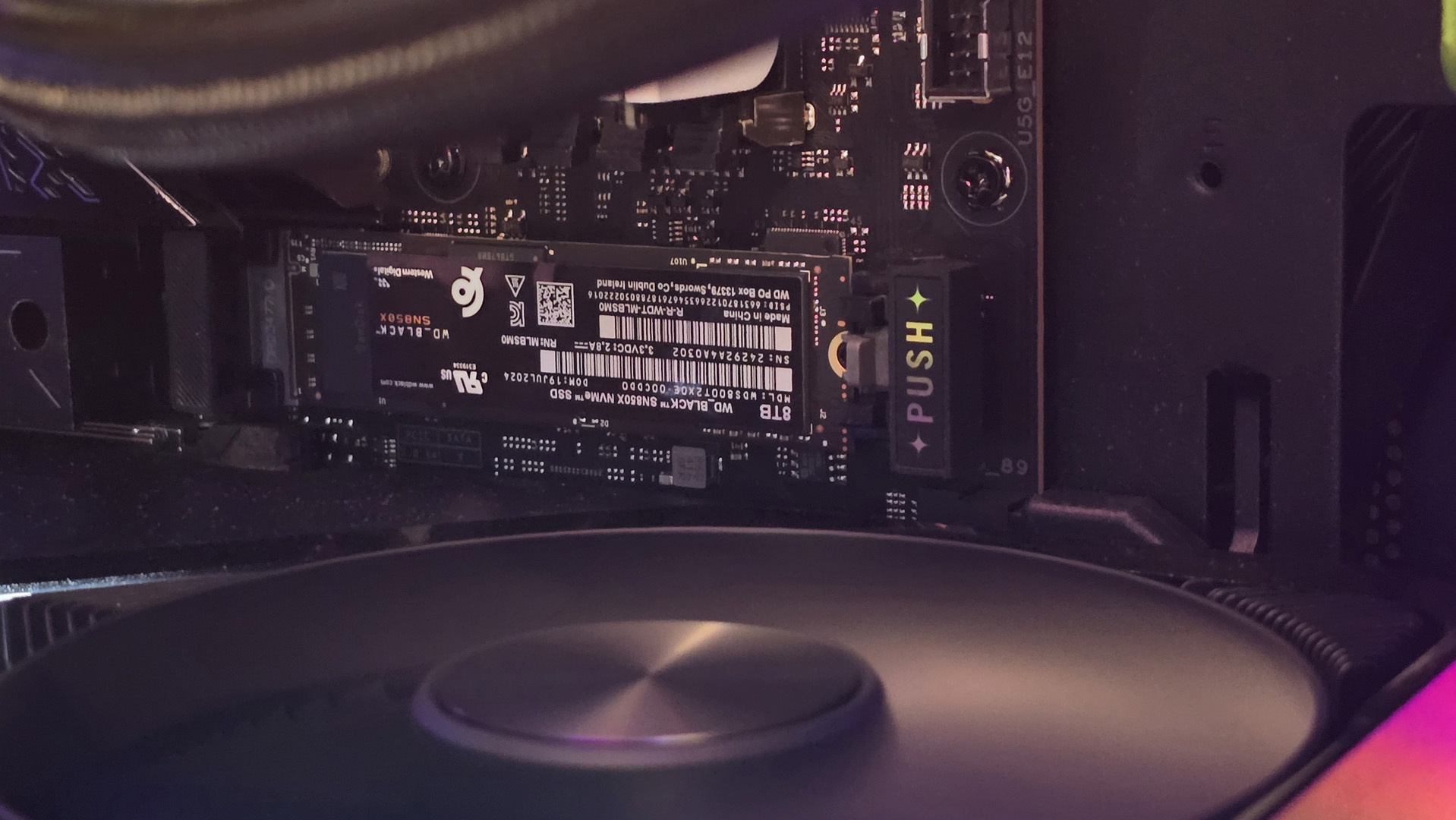
Specifications
Reasons to buy
Reasons to avoid
✅ You've only got one M.2 socket to play with and you want mega storage: Two speedy 4 TB drives will save you money (and likely gain you gaming performance), but if 8 TB in one chunk is your use case then this is the drive for you.
✅ You need to store and transfer a lot of huge files on the regular: Video editor? Cash to spare? The 8 TB SN850X starts to make a lot of sense.
❌ You plan on using it primarily for gaming: Thanks to low 4K read and write performance, the SN850X is best thought of as a huge and fast storage drive with gaming potential, not the best pick as a very fast dedicated gaming drive.
❌ You've got more than one M2 slot spare: Two 4 TB drives will be the better choice for many, as you're likely to receive better 4K performance for a cheaper price for the same total amount of storage.
Yep, it's the WD Black SN850X again. Except this time, the 8 TB version, which was released much more recently. If you must have 8 TB of SSD storage on a single stick, it's the drive to go for—but it does have some caveats to be aware of.
First of all, thanks to its use of four NAND chips instead of the usual two, you do get lower 4K random read and write performance than many smaller drives. That means it's not the best pick as a dedicated gaming drive. Think of it as an ultra-huge storage drive that can also be used for gaming, and you're more in the ballpark.
But if you spend a lot of time working with and transferring gigantic files (perhaps for video editing, photography, or asset management) and you're limited to a single M.2 slot, this mega drive is where you probably want to be.
In our testing we found it delivered close to stated performance, namely 7,100 MB/s reads and 6,590 MB/s sequential writes. That's seriously speedy in a conventional sense, making it a superb NVMe storage drive.
Something else to be aware of, however, is the price. With an MSRP of $649, it's often cheaper to buy two 4 TB drives (like the Team Group MP44 above), and they'll likely deliver better 4K performance, too.
However, if all you've got is a single M.2 slot and you don't mind paying the premium, the WD Black SN850X is a darn fine pick. While it has definite downsides, if 8 TB in one stick is what you require this drive is it.
Read our full WD Black SN850X 8 TB NVMe SSD review
The best 2230 SSD
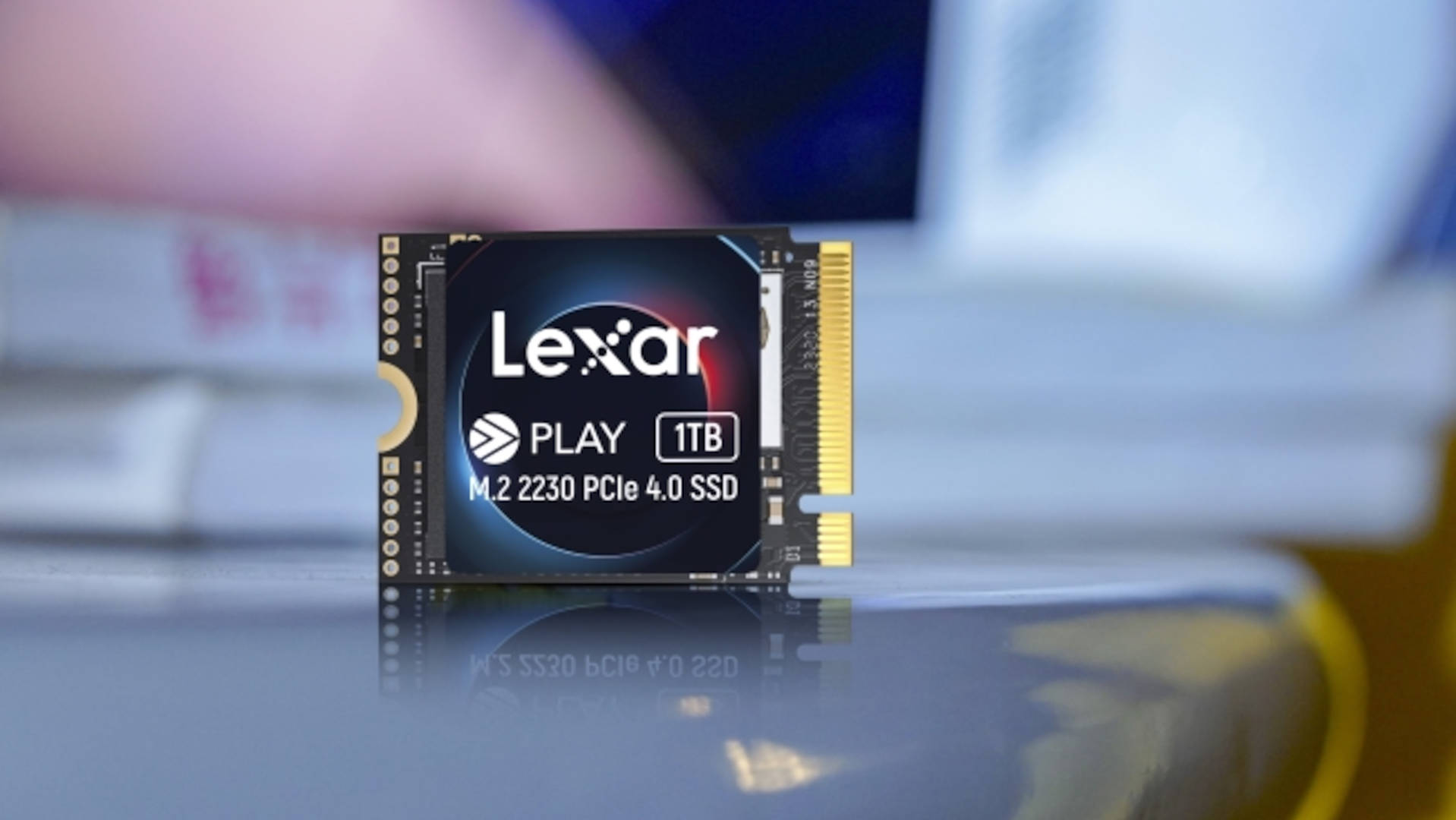
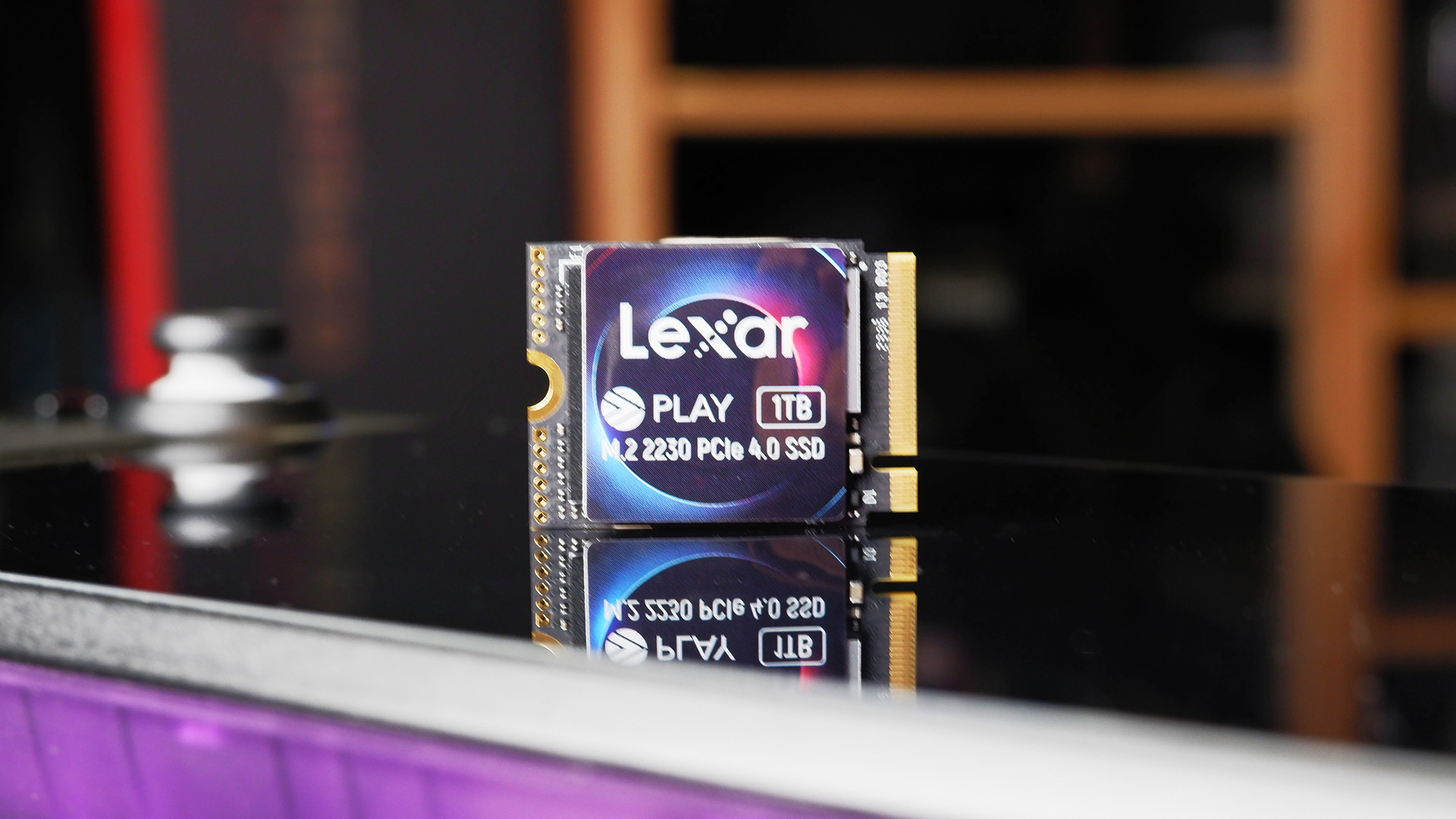
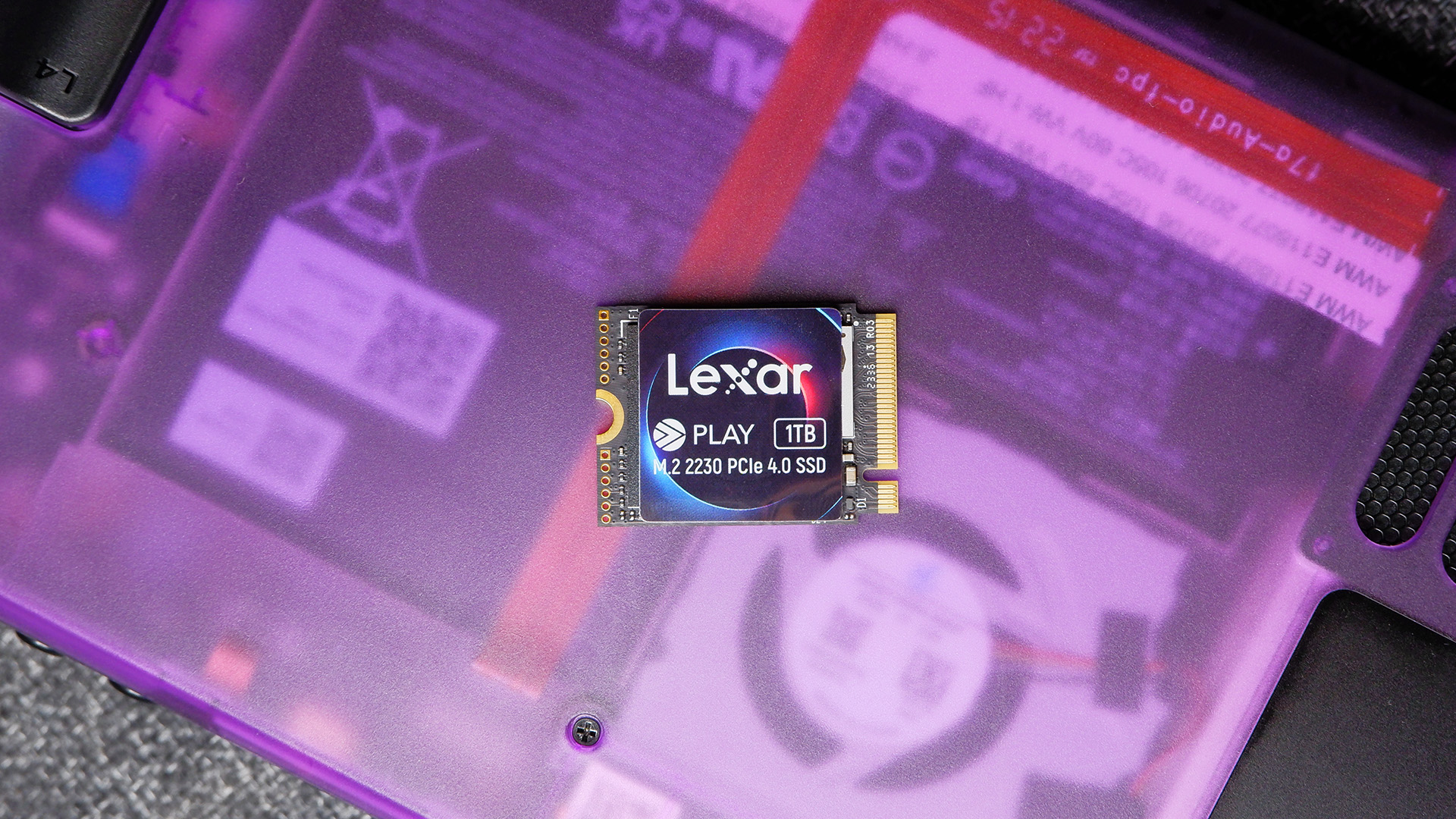
Specifications
Reasons to buy
Reasons to avoid
✅ You want more storage for your Steam Deck: Did you find a 256 GB model for cheap? You'll be wanting to upgrade the storage at some point, and this is absolutely the drive you should pick.
❌ You want higher capacities: 1 TB is the number, and the number is 1 TB. Still, that's a decent amount for a handheld, although more is always better, right?
If you're looking for an upgrade for your handheld gaming PC, then you'll probably want a 2230 SSD for more storage space. There's simply no better than the Lexar Play 2230 right now.
The Play 2230 makes use of 1 TB of Micron TLC NAND flash memory and a Silicon Motion SM2269XT controller. That's a winning combination of components, and somewhat surprising to see in an SSD primarily used in handhelds. It's capable of 5,400 MB/s read speeds and 4,700 MB/s writes, and our testing revealed those claimed figures are pretty much spot on.
The Lexar Play has a large SLC cache—around 240GB, according to our testing, which is pretty sizeable for a drive of this type and price. Do you see a theme here? The little Lexar delivers impressive specs and even more impressive figures for reasonable money, and that's made it an absolute shoe-in for this list.
Thermals? Not an issue. Even running the notoriously demanding 3DMark Storage benchmark, our testing revealed that it tops out at 53°C. That's an impressively low figure for such a small and performant drive and makes it very well suited for being crammed in the thermally-limited confines of a handheld gaming PC frame.
So what's the downside? Well, 1 TB is what you get. No 2 TB for you, although 1 TB is still a very good size for keeping a few large game installs going at once. Plus, if you're handheld gaming, you're likely going to want to stuff it with indie games, and they tend to come with much smaller install sizes than something more high-budget and graphically intense.
Cool, fast, affordable, and dare we say it, downright cute. If a 2230 SSD is what you need, there currently is no better.
Read our full Lexar Play 2230 1 TB SSD review.
The best SSD for PS5
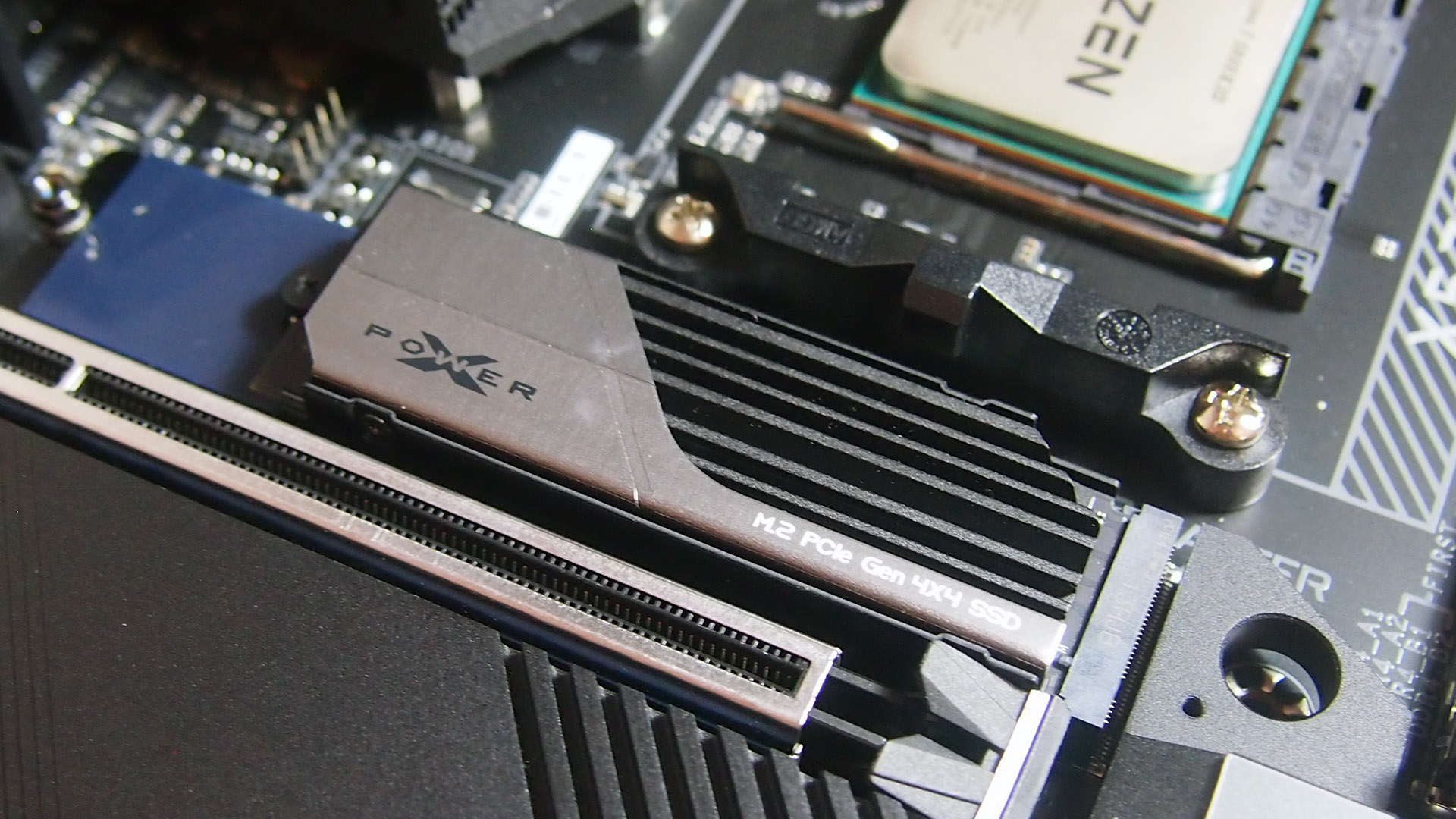
Specifications
Reasons to buy
Reasons to avoid
Our favorite Silicon Power XS70 SSD config:
Silicon Power 2TB XS70 | 2 TB | 7100 MB/s read | 6600 MB/s write
The 2 TB model can be found at a very competitive price and works extremely well as an expansion drive for the PlayStation 5. With super fast read/write speeds and an attractive and great-performing heatsink, this little drive is deceptive in all the right ways.
✅ You're looking for the best drive for your PS5 : It's small enough to fit in a PS5 without issue, and delivers super speeds. Job done there, then.
❌ You'd like some software additions: Many SSDs come with cloning software for PC installs, but you get precisely none with the Silicon Power XS70. Shame.
Wait, a console recommendation? On PC Gamer? Why yes, we enjoy the delights of the PS5 on occasion, too. If you've been looking in wonder at the PS5 Pro with its chonky 2 TB SSD and wishing your standard model had that sort of capacity, there's no current better pick than the Silicon Power 2 TB XS70.
It's been made to slot right into a PS5. No hassle, no fuss, just a slim heatsink that slots right into the chassis with the minimum of effort. It's a proper performer, too, with 7,300 MB/s write speeds and 6,800 MB/s reads. That makes it simply one of the fastest Gen 4 drives you can buy in general, which means it's still a great pick for a PC install, too.
And while you might be thinking to yourself that you'd prefer to buy something from a more recognisable brand like Samsung or Western Digital, know that the XS70 is a bit of a stalwart on these pages.
Really the only major drawback here is a lack of included software, like cloning tools for an easy PC install experience. Still, free alternatives are available, and the XS70 can often be found for a very reasonable price. Silicon Power has focused on the important things, like a slim but efficient SSD and great speeds, and as a result, it's a brilliant drive no matter where you stick it.
And a PS5 is where it fits best. So if you're looking to make that console upgrade (or simply looking for a good alternative choice to any Gen 4 SSD), the XS70 should be very high on your list.
Read our full Silicon Power 2 TB XS70 review.
The best PCIe 5 SSD
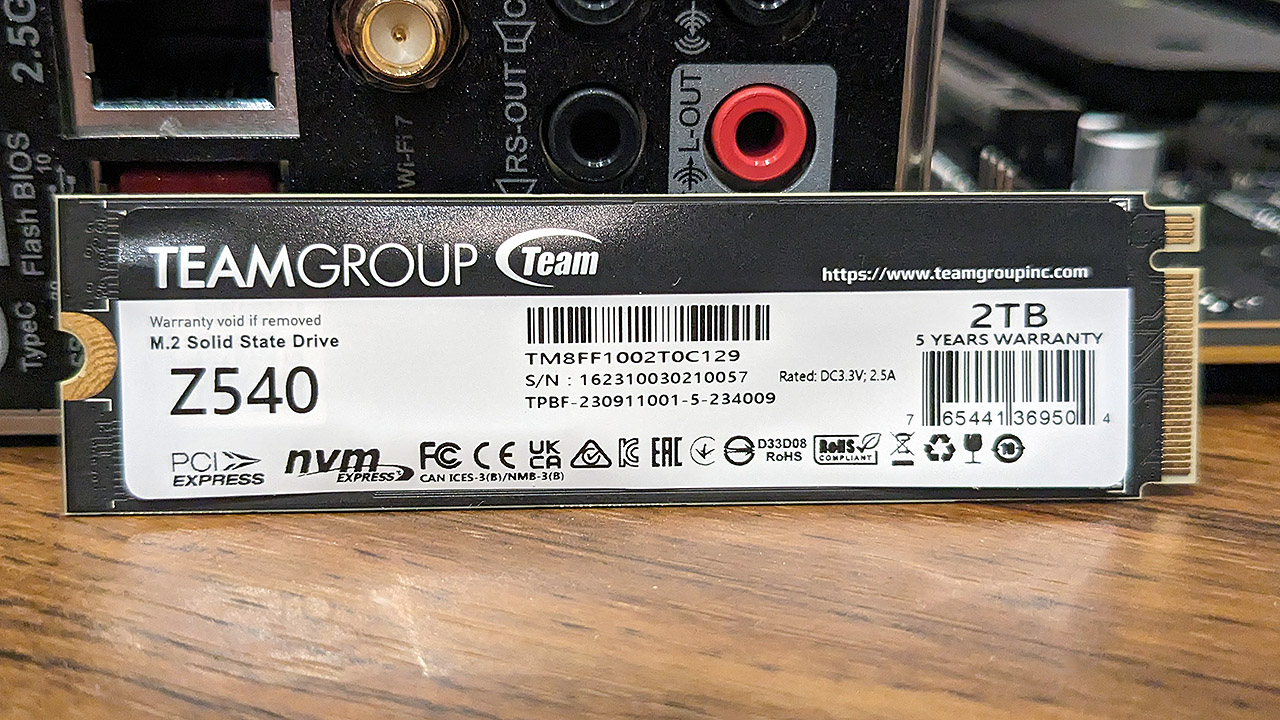
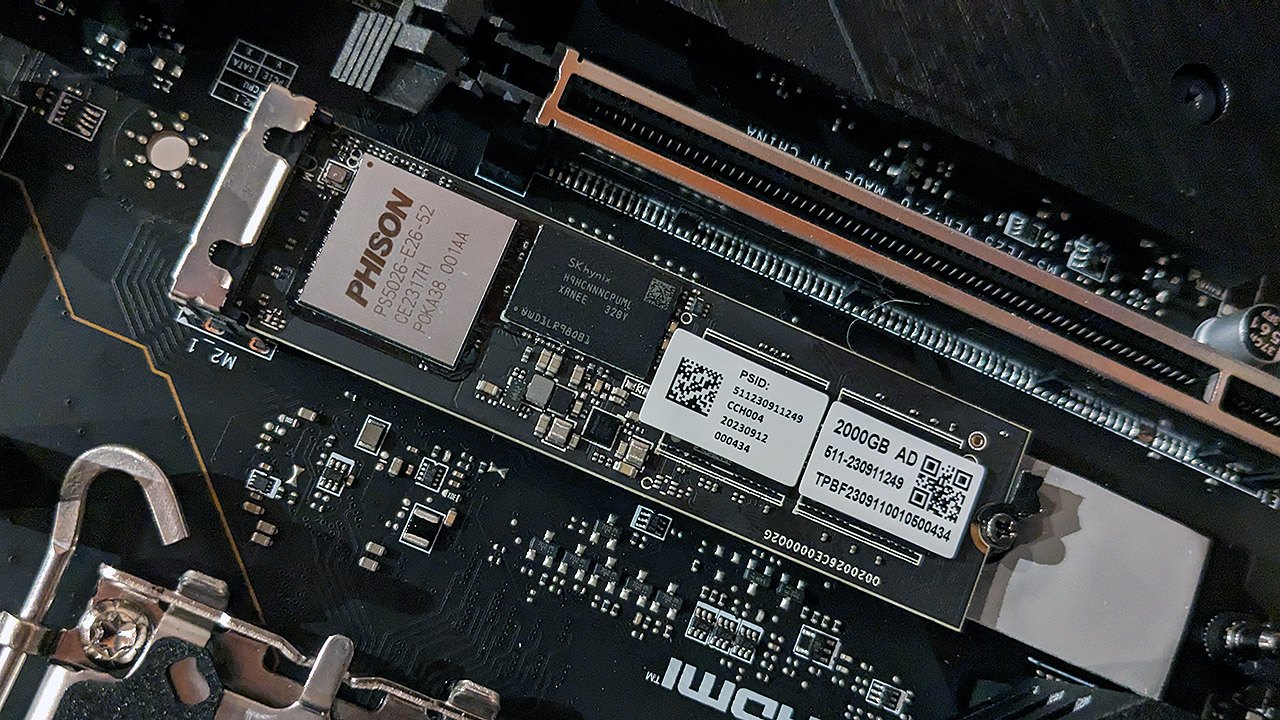
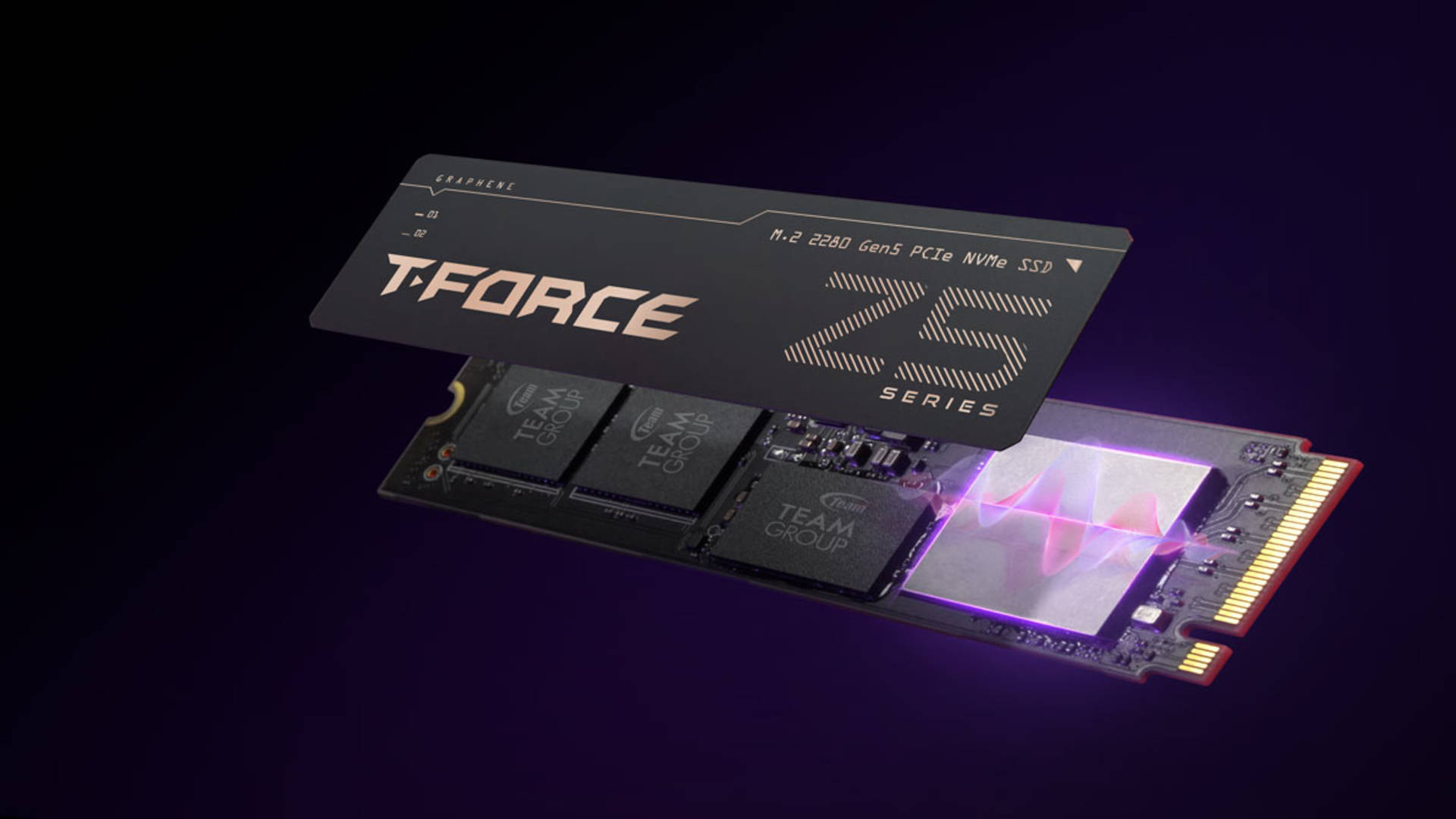
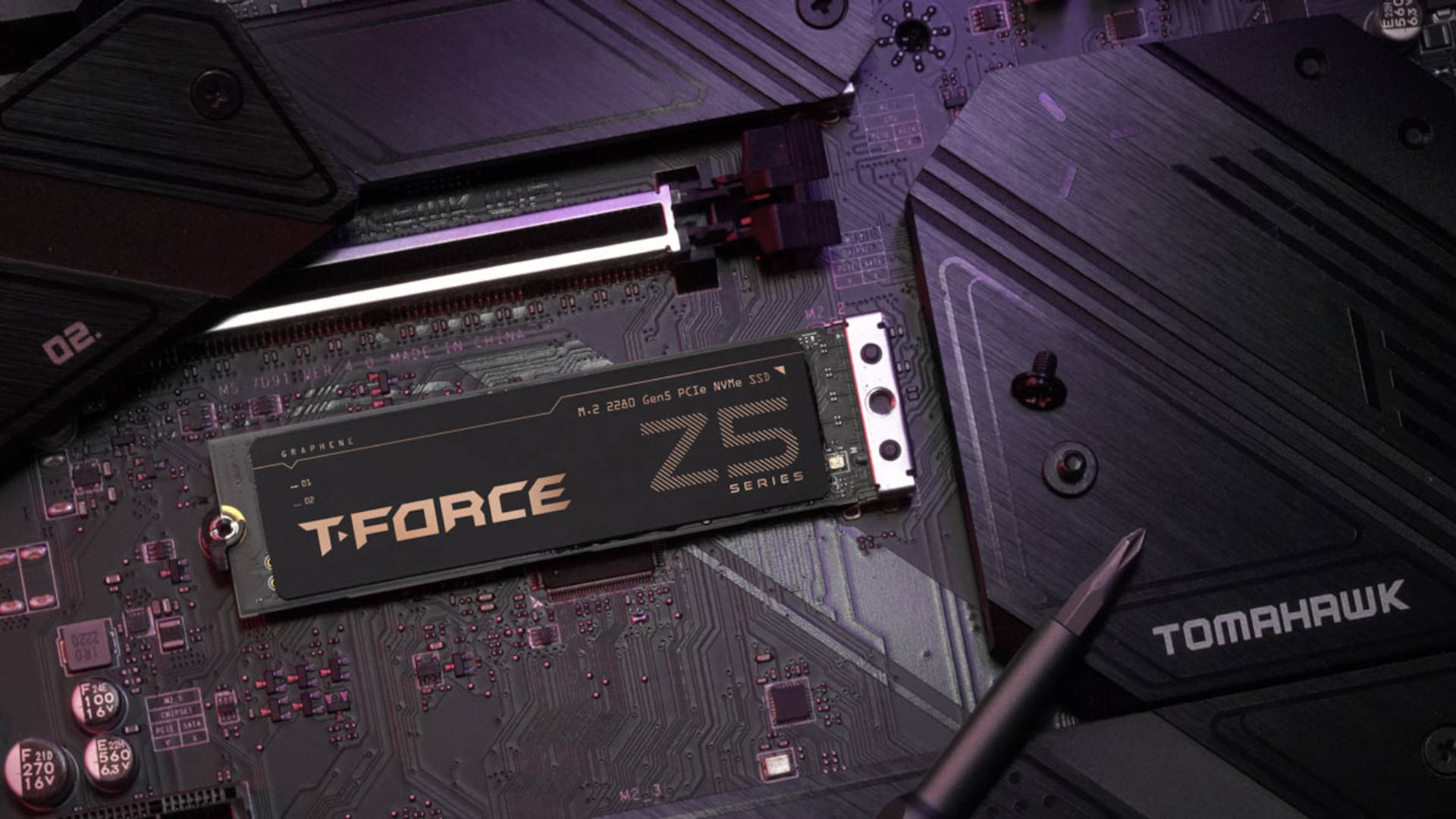
Specifications
Reasons to buy
Reasons to avoid
✅ You must have the fastest: For some, it's all about the numbers. This drive delivers huge, whomping great ones, with one smaller addition—the price, compared to other Gen 5 SSDs.
❌ You're expecting noticeable gaming performance gains: Or in general use, for that matter. A good Gen 4 drive is a much more sensible choice for superb speeds in most scenarios without the cost.
❌ You want something that runs cool: Gen5 drives don't, as a general rule. This one is no exception, although it's not as blazing hot as some and good heatsinks are available.
Ah, PCIe 5.0 drives, or Gen 5 as they're often known. For a long time, we couldn't include them on this page, as the gaming performance jump is fairly minimal and they're priced significantly higher than Gen 4 SSDs. Plus, they can run a little toasty. Still, if you must have the very latest, very fastest thing, the Team Group T-Force Z540 is the best PCIe 5 SSD, mainly by virtue of the fact it's usually cheaper than the rest.
That doesn't mean we're not impressed by its performance. With rated figures of 12,400 MB/s reads and 11,800 MB/s writes for the 2 TB and 4 TB models (11,700 and 9,500 MB/s for the 1 TB), it really does give the benchmarks a thorough thrashing.
But when it comes to real-world gains, you'd be hard-pressed to see the difference over a good Gen 4 drive. Few applications exist that really take advantage of all that performance headroom, and as a result, you're probably better off saving some cash and buying one of the other picks in this guide.
There is a but, however, and it's a large one. Should you be of the video editing persuasion (and especially if you deal with 8K video) the T-Force Z540's extreme speeds start to make sense.
Plus, you could look at it as a drive that will likely be considered very fast by anyone's standards for a while to come. Still, that's futureproofing talk, and that's a dirty word around these parts, as it's often a concept that's proven wrong.
Whatever. If you absolutely must have the fastest drive available, at least you shouldn't overpay for it. The T-Force Z540 is usually one of the cheapest Gen 5 drives you can find, and as a result, it's the best we recommend right now.
Read our full Team Group T-Force Z540 2TB SSD review.
Also tested
Samsung 9100 Pro
For a first attempt at a Gen 5 SSD, Samsung has done a decent job with the 9100 Pro, with great sequential performance and power efficiency. However, the price is significantly higher than the competition, and there's little benefit to gaming with PCIe 5.0 drives.
PC Gamer score: 77%
Read our full Samsung 9100 Pro review.
WD Blue SN5000
Got a lot of games? Well this SSD definitely has room, and the load speeds you'd hope for. Unfortunately, that all comes at a premium price, alongside less than stellar thermal regulation.
PC Gamer score: 67%
Read our full WD Blue SN5000 review.
Corsair MP700 Elite
Boasting phenomenally cool performance for a PCIe 5.0 drive, plus impressive random 4K performance, you're left with one question: What's it doing down here and not up top? The bottom line is price, with other SSDs promising better performance for your money. A limited range of storage sizes—only 1 TB and 2TB currently—seal its fate.
PC Gamer score: 83%
Read our full Corsair MP700 Elite review.
Nextorage NEM-PA
This drive was our top recommendation for best high capacity SSD for a long time but it's very hard to find in stores and seems to have been replaced by the DRAM-less NEM-PAB version. If you can find one, then grab it while you can.
PC Gamer score: 90%
Read our full Nextorage NEM-PA review.
Samsung 990 Evo Plus
There's plenty to like about the Samsung, not least that it comes from one of the most respected names in the industry. Still, while the sequential performance is great, the random 4K numbers are less so, and there's still that issue with price.
PC Gamer score: 74%
Read our full Samsung 990 Evo Plus review.
Crucial P310
It's a decent enough storage upgrade for your handheld gaming PC, but there are faster drives out there and it gets hot when worked hard for a while.
PC Gamer score: 79%
Read our full Crucial P310 review.
WD Black SN770M
If you want to give your handheld gaming PC a decent boost in storage capacity and performance, then the SN770M is seriously worth considering. Prices vary a lot, though, and it gets quite toasty when being worked hard.
PC Gamer score: 85%
Read our full WD Black SN770M review.
Seagate FireCuda 540
As PCIe 5.0 drives go, this is a very fast performer. That being said, there's still not much real-world reason to buy one over a good PCIe 4.0 drives, so we still recommend you save your money on one of the SSDs above.
PC Gamer score: 72%
Read our full Seagate FireCuda 540 review.
Crucial P3 Plus 2 TB
You get a lot of capacity for your money here, but SLC cache worries and a slightly skewed price/performance metric makes this a tough drive to recommend over the competition.
PC Gamer score: 70%
Read our full Crucial P3 Plus 2 TB review.
WD Black SN770
A very solid and speedy NVMe drive, this, but the WD Black SN850X does it better—for roughly the same money. Still, if you can find a good deal on one it's a great pick, although it does run hot.
PC Gamer score: 87%
Read our full WD Black SN770 1 TB review.
Samsung 990 Pro 2 TB
Samsung are a go-to name in the world of storage, and the 990 Pro is certainly a performer. But when you can get similar performance for less, there's not a whole lot of reason to opt for this drive, despite its impressive numbers.
PC Gamer score: 87%
Read our full Samsung 990 Pro 2 TB review.
Kioxia Exceria Pro 2 TB
It was well-priced on launch, this Gen 4 SSD, but the performance is off the pace. Plus, while SSD drives aren't as cheap as they used to be, you can still find better deals.
PC Gamer score: 71%
Read our full Kioxia Exceria Pro 2 TB review.
How we test SSDs
We put every SSD we get in the PC Gamer labs through their paces in various benchmarks made up of a mix of synthetic tests and real-world applications. To ascertain a drives sequential throughput, we use ATTO SSD Benchmark for compressible data (a best-case scenario) and AS SSD for incompressible data (more realistic). We also test random throughput with AS SSD and a combination of CrystalDiskMark 7.0 and Anvil Pro.
When it comes to the real-world tests, we time how long it takes to copy a 30 GB game install across the drive and use PCMark10 and Final Fantasy XIV: Shadowbringers, which includes a level load test.
We also check operating temperatures to ensure that the drive isn't getting too hot and throttling. That's becoming more of an issue with faster and faster drives. PCIe 5.0 drives appear to require a lot more cooling than previous generations, which does make you wonder if the extra speed is really worth it yet.
Where to buy the best SSDs

Where are the best gaming SSD deals?
In the US:
Amazon - Up to 50% off internal and external SSDs
Walmart - Deals on internal and external SSDs
B&H Photo - Save up to $50 on NVMe SSDs
Best Buy - Great prices on Samsung SSDs
Staples - Save up to 30% on a range of SSDs, USB sticks, and external SSDs
Newegg - Plenty of NVMe SSDs
In the UK:
Amazon UK - Save on HDDs, SDDs, and external drives
Scan - SATA drives as low as £21
Ebuyer - 500GB SSDs starting from £34.98
Overclockers - Save up to £51 on Samsung SSDs
Currys - Save £32.00 on WD Black SN750
Laptops Direct - Save on SSDs for your laptop
M.2 SSD FAQ
Can I fit an M.2 SSD on my motherboard?
The M.2 socket has been included on motherboards of all kinds for many years now, so the chances are that there's a spare slot sitting inside your existing gaming PC. Check out your motherboard's specs page online before pulling the trigger on an NVMe SSD purchase, though, to be sure. Those harboring a board that's a few years old now, do yourself a favor and make sure it supports booting from an NVMe drive first. Not all older motherboards do, especially if you're going back multiple CPU generations (maybe a full upgrade's due, if so).
What is NVMe, exactly?
The NVMe, or Non-Volatile Memory Express interface, has been designed specifically with solid state drives in mind. In contrast, SATA, the previous interface in charge, was built to cater to most HDDs. The thought is, at the time, that no storage would ever need to exceed its lofty max bandwidth. To the surprise of a few, new storage mediums such as solid state absolutely blaze past SATA's max bandwidth, and so a new protocol in NVMe was born.
That makes NVMe SSDs the perfect storage tech for gaming.
Running on the same basic interface as your graphics card, NVMe SSDs deliver more raw bandwidth and performance than any SATA-based SSD could ever offer. They're also a lot smaller than any other hard drive or SSD too, which all means that the best NVMe SSDs are perfect for either that small form factor build you always wanted or a monstrous high-end gaming PC build.
What's so special about NVMe?
The old storage paradigm was built on the idea of spinning disks. When SSDs hit the mainstream consumer market back in 2007, they reset our expectations for storage. Moving from the mechanical world of hard drives to the silicon world of SSDs brought rapid improvements in performance, technology, capacities, and reliability. SSDs quickly saturated the various SATA connections, and so faster alternatives were needed, but the interface was only part of the problem.
The AHCI (Advanced Host Controller Interface) command protocol was designed for much slower media (i.e., spinning magnetic disks). AHCI is inefficient with modern SSDs, so a new standard was developed: NVMHCI (Non-Volatile Memory Host Controller Interface). Combine NVMHCI with a fast PCIe interface, and you have NVMe, Non-Volatile Memory Express. It's a much-improved interface developed around the needs of flash memory rather than spinning disks.
What's NVMe performance like in the real world?
If you're copying a game from one drive to another or validating game files in Steam, faster NVMe drives make a difference. They can also shave off a second or two when it comes time to load a game level, but the more significant difference is against hard drives, where even a slower SATA SSD is much faster. Go beyond a certain point, and all SSDs start to feel similar.
In other words, while the speed freak in me loves what NVMe brings to the table, I recognize that in practice, it's sometimes not needed. If you're looking to build something on a very, very tight budget, good SATA SSDs remain a useable option, with prices now falling below 10 cents per GB.
NVMe drives, however, are now the default pick for a modern machine, and prices are still very affordable. With budget NVMe prices now matching SATA drives, most new builds should seriously consider whether the extra power and data cables of SATA are necessary.
Can you put a PCIe 4.0 SSD in a 3.0 slot?
Yes, you can. They M.2 socket is identical between the two generations of interface and so a PCIe 4.0 SSD will fit comfortably inside a PCIe 3.0 slot. They will also function perfectly well too, except the Gen4 drive will be limited by the speed of the older interface.
The same goes for PCIe 4.0 and PCIe 5.0 drives. You're just wasting the potential of the higher-speed drive by dropping it into a slower slot, is all, but it will work.
What PCIe generation should I look for?
Right now, PCIe 4.0 is the go-to PCIe generation. That's because it offers a high speed at a reasonable cost. The newest gaming SSDs on the market offer PCIe 5.0 capability, which doubles the theoretical bandwidth an SSD can run at. However, these are few and far between and awfully expensive. Also, the first drives of any PCIe generation tend to end up much slower than what that generation is truly capable of.
Here are the rough speeds (multiply by 1,000 to get MB/s) for each PCIe generation over x4 lanes:
PCIe 1.0 / Gen1: 1 GB/s
PCIe 2.0 / Gen2: 2 GB/s
PCIe 3.0 / Gen3: 4 GB/s
PCIe 4.0 / Gen4: 8 GB/s
PCIe 5.0 / Gen5: 16 GB/s
How big a gaming SSD should I buy?
The easy answer is: as big as you can afford. With SSDs, the higher capacity, often the quicker they are. That's because you end up with more memory dies plumbed into a multi-channel memory controller, and that extra parallelism leads to higher performance.
We would traditionally say that an entry-level SSD should be 1 TB in order to pack in your operating system, for slick general system speed, and your most regularly played games. But such is the increasing size of modern games that a 2 TB SSD is increasingly looking like the minimum recommendation, and a 4 TB drive or above will really give you some proper breathing room for lots of big game installs.
The biggest gaming news, reviews and hardware deals
Keep up to date with the most important stories and the best deals, as picked by the PC Gamer team.

Jeremy has been writing about technology and PCs since the 90nm Netburst era (Google it!) and enjoys nothing more than a serious dissertation on the finer points of monitor input lag and overshoot followed by a forensic examination of advanced lithography. Or maybe he just likes machines that go “ping!” He also has a thing for tennis and cars.
- Alan Dexter
- Chris SzewczykHardware Writer
- Katie WickensHardware Writer
- Jacob RidleyManaging Editor, Hardware
